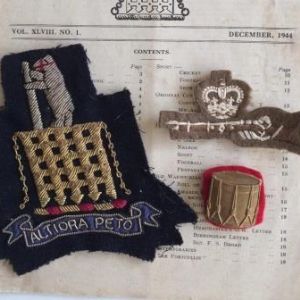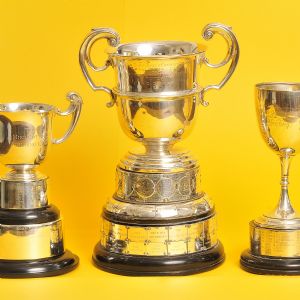Warwick School in 110 objects
Warwick School in 110 Objects is an online museum which was first created to mark Warwick School’s 1,100th anniversary in 2014. The museum is inspired by the History of the World in 100 Objects, a series of talks on BBC Radio 4 which were based on artefacts in the British Museum.
This online museum explores different facets of Warwick School through 110 items. Each object, artefact or memento tells a different story, reflecting something of the life and history of the school. Objects have been nominated by current boys, staff, Old Warwickians and members of the wider school community. A number of the objects are on display in the school museum and many can be seen around the school today.
If you would like to nominate an object please email alumni@warwickschool.org, explaining why you have chosen the object and attaching an image if you have one.
GNF LFT 2021
At the end of the third national lockdown, in March 2021 all staff and pupils were asked and encouraged to undertake frequent lateral flow tests to monitor and combat the spread of Covid-19.
GNFLFT2).jpg1497GNF LFT 2021At the end of the third national lockdown, in March 2021 all staff and pupils were asked and encouraged to undertake frequent lateral flow tests to monitor and combat the spread of Covid-19.Medals awarded to Leo Jones
These medals belonged to Second Lieutenant Leo Jones, a pupil at Warwick School from 1906 to 1910, whose brother Roy was killed in 1918, and whose diaries were found in the school archives a few years ago. Leo survived the First World War, and, indeed, served in the Second World War, as the two medals on the right (the Defence Medal and the War Medal, 1939–45) show. Leo Jones served as OWA chairman from 1961 to 1962.
MedalsawardedtoLJonescompressed.jpg1496Medals awarded to Leo JonesThese medals belonged to Second Lieutenant Leo Jones, a pupil at Warwick School from 1906 to 1910, whose brother Roy was killed in 1918, and whose diaries were found in the school archives a few years ago. Leo survived the First World War, and, indeed, served in the Second World War, as the two medals on the right (the Defence Medal and the War Medal, 1939–45) show. Leo Jones served as OWA chairman from 1961 to 1962.Medals awarded to DPW Rowan Robinson
Derrick Robinson, later Rowan-Robinson, was a pupil at WS from 1933 to 1935. He was the first Hampden bomber pilot to be shot down over the North Sea in April 1940 by an enemy night fighter. He had flown out, with seven other aircraft, to lay mines around Kiel. Only five returned, and Derrick’s body was never recovered. He was 22 years old when he died.
PRWRRcompressed.jpg1495Medals awarded to DPW Rowan RobinsonDerrick Robinson, later Rowan-Robinson, was a pupil at WS from 1933 to 1935. He was the first Hampden bomber pilot to be shot down over the North Sea in April 1940 by an enemy night fighter. He had flown out, with seven other aircraft, to lay mines around Kiel. Only five returned, and Derrick’s body was never recovered. He was 22 years old when he died.1935 sports medals
Three sports medals awarded in 1935 to Ronald Guy Horne, whose name is on the schools WW2 memorial. The medals were awarded for the under 14 1/2 age group. L-r: Winner in 120 yds low hurdles; Second in 100 yds; and, Second in quarter mile. Ron played for the 1st XV in 1936-7 and was a member of the Boxing VIII in 1935. He boxed against Dick Turpin in an amateur fight in Warwick and won by a knock-out.
1935sportsmedalsawardedtoRGHorne.jpg14911935 sports medalsThree sports medals awarded in 1935 to Ronald Guy Horne, whose name is on the schools WW2 memorial. The medals were awarded for the under 14 1/2 age group. L-r: Winner in 120 yds low hurdles; Second in 100 yds; and, Second in quarter mile. Ron played for the 1st XV in 1936-7 and was a member of the Boxing VIII in 1935. He boxed against Dick Turpin in an amateur fight in Warwick and won by a knock-out.Pat Martin's
The History of Heart of England Building Society was written by Head Master PW Martin (WS Head 1962-77) in the early years of his retirement.
PatMartin'sbook.jpeg1489Pat Martin'sThe History of Heart of England Building Society was written by Head Master PW Martin (WS Head 1962-77) in the early years of his retirement.The Roman Barn
The remains of a previously unknown Roman building were discovered during building work on the new school for King’s High. Wall foundations for a large aisled structure the size of a medieval church were unearthed on the Banbury Road site (formerly a Warwick School rugby/cricket pitch). Archaeologists say the building most likely forms a component of a large villa estate, which must have spread along the banks of the Avon and been connected to the Roman road system. Early indications suggest it developed in the 2nd century AD and probably went out of use in the 4th century. Constructed of local sandstone, over 28m long by 14.5m wide, the villa would have been the largest building ever seen in the region. Corn drying ovens, both inside and outside the structure, attest to an agricultural function, although internal wall divisions at the opposite end of the building probably indicate a suite of domestic rooms.
TheRomanBarn3.jpg1485The Roman BarnThe remains of a previously unknown Roman building were discovered during building work on the new school for King’s High. Wall foundations for a large aisled structure the size of a medieval church were unearthed on the Banbury Road site (formerly a Warwick School rugby/cricket pitch). Archaeologists say the building most likely forms a component of a large villa estate, which must have spread along the banks of the Avon and been connected to the Roman road system. Early indications suggest it developed in the 2nd century AD and probably went out of use in the 4th century. Constructed of local sandstone, over 28m long by 14.5m wide, the villa would have been the largest building ever seen in the region. Corn drying ovens, both inside and outside the structure, attest to an agricultural function, although internal wall divisions at the opposite end of the building probably indicate a suite of domestic rooms.The Portcullis Club
In the early 1950s an Old Warwickian Club and Ground Committee was set up with the objective of looking for a suitable ground for the Old Warwickians Rugby Football Club, a premises for the Old Warwickian Association headquarters and to raise funds to support this initiative. The committee searched for suitable premises, and also started fund raising – this included a fete at Warwick School with a dance in Big School in the evening. There was even a bar in the reception area at school! 3 Church Street, Warwick came on the open market and, through the good offices of OW Peter Bromwich, was purchased at auction for £1,750. D G Palmer, Peter Treadaway, Geoff Dodd, Geoff Malins, David Balfrey and many other OWs were heavily involved in raising £6,000 to re-furbish the interior of the building to provide a bar and a large committee room, which was made available for social events, and living accommodation for a resident steward. Once the club was up and running it became a very successful headquarters running many events. Rugby teams were entertained and fed following their matches on the Park. Their bar takings were a welcome source of income. Following the purchase of the Hampton Road ground and the provision of a rugby clubhouse, less use was made of the club by the rugby teams. Over the next few years it became increasingly difficult to balance the accounts and in spite of valiant efforts of a stalwart band of OW volunteers, the eventual decision to close the club in 2007 became inevitable.
OB68PortcullisClubopening1).jpg1444The Portcullis ClubIn the early 1950s an Old Warwickian Club and Ground Committee was set up with the objective of looking for a suitable ground for the Old Warwickians Rugby Football Club, a premises for the Old Warwickian Association headquarters and to raise funds to support this initiative. The committee searched for suitable premises, and also started fund raising – this included a fete at Warwick School with a dance in Big School in the evening. There was even a bar in the reception area at school! 3 Church Street, Warwick came on the open market and, through the good offices of OW Peter Bromwich, was purchased at auction for £1,750. D G Palmer, Peter Treadaway, Geoff Dodd, Geoff Malins, David Balfrey and many other OWs were heavily involved in raising £6,000 to re-furbish the interior of the building to provide a bar and a large committee room, which was made available for social events, and living accommodation for a resident steward. Once the club was up and running it became a very successful headquarters running many events. Rugby teams were entertained and fed following their matches on the Park. Their bar takings were a welcome source of income. Following the purchase of the Hampton Road ground and the provision of a rugby clubhouse, less use was made of the club by the rugby teams. Over the next few years it became increasingly difficult to balance the accounts and in spite of valiant efforts of a stalwart band of OW volunteers, the eventual decision to close the club in 2007 became inevitable.OW Blazer
The Old Warwickian Association was founded in 1898 as the Old Warwickian Club, with much encouragement from the otherwise rather less than successful headmaster Rev Robert Percival Brown, and it held its first dinner in Holborn, London in 1900. Life Membership was set at £1 10s. From the start playing sporting fixtures – rugby and cricket – was important to members of the new Club, and very soon some wonderful sports jackets were commissioned, some early examples of which survive. The predominant colour which was decided upon – maroon – lasts to this day in the form of the very popular OW tie. The blue and white bands are colours associated with Warwick School since 1123. In 2014 the total membership of the Old Warwickian Association stood at 4,800. By 2020, membership had risen to over 6,000.
OB67OWBlazer1).jpg1443OW BlazerThe Old Warwickian Association was founded in 1898 as the Old Warwickian Club, with much encouragement from the otherwise rather less than successful headmaster Rev Robert Percival Brown, and it held its first dinner in Holborn, London in 1900. Life Membership was set at £1 10s. From the start playing sporting fixtures – rugby and cricket – was important to members of the new Club, and very soon some wonderful sports jackets were commissioned, some early examples of which survive. The predominant colour which was decided upon – maroon – lasts to this day in the form of the very popular OW tie. The blue and white bands are colours associated with Warwick School since 1123. In 2014 the total membership of the Old Warwickian Association stood at 4,800. By 2020, membership had risen to over 6,000.The Pbone
In 2003 a member of the senior brass ensemble was an aspiring trumpeter called Hugh Rashleigh. Hugh was fascinated that the instrument all brass teachers use to demonstrate the harmonic series (the group of notes common to all brass instruments) was a plastic hosepipe, with a mouthpiece at one end and a funnel at the other. Despite being dyslexic Hugh gained a place at Loughborough University to read engineering. As part of his final year project he had to take an original design from the drawing board and produce a working model. Hugh chose to make a plastic trombone. After graduation Hugh took his prototype model to financial backers and gained funding to produce the trombone. With an initial investment of £60,000 in his pocket he travelled to China to find an engineering company willing and able to manufacture the instrument. Eventually the trombone was produced and gained distribution through UMI Musical Instruments. The plastic trombone or pBone has become a worldwide phenomenon and can be seen and heard wherever brass players meet. pBone beat hundreds of small businesses to win the Innovation of the Year prize at the Nectar Business Small Business Awards 2013.
OB66Pbone1).jpg1442The PboneIn 2003 a member of the senior brass ensemble was an aspiring trumpeter called Hugh Rashleigh. Hugh was fascinated that the instrument all brass teachers use to demonstrate the harmonic series (the group of notes common to all brass instruments) was a plastic hosepipe, with a mouthpiece at one end and a funnel at the other. Despite being dyslexic Hugh gained a place at Loughborough University to read engineering. As part of his final year project he had to take an original design from the drawing board and produce a working model. Hugh chose to make a plastic trombone. After graduation Hugh took his prototype model to financial backers and gained funding to produce the trombone. With an initial investment of £60,000 in his pocket he travelled to China to find an engineering company willing and able to manufacture the instrument. Eventually the trombone was produced and gained distribution through UMI Musical Instruments. The plastic trombone or pBone has become a worldwide phenomenon and can be seen and heard wherever brass players meet. pBone beat hundreds of small businesses to win the Innovation of the Year prize at the Nectar Business Small Business Awards 2013.School motto
The school motto “Altiora Peto” means “I Seek Higher Things”. Headmaster John Pearce Way announced the new motto in the Master’s Book: As I can find no trace of an existent school motto, I have selected one which embodies, in one phrase, as many of the aims of school life as is possible. I hope that it will meet with the hearty approval of all the members of the school and that they will live up to it. It is one I thought of first for the School House; but the School House and School should, I believe, have the same motto: Altiora Peto. July 23, 1893. JP Way.
OB65schoolmotto-compressed1).jpg1441School mottoThe school motto “Altiora Peto” means “I Seek Higher Things”. Headmaster John Pearce Way announced the new motto in the Master’s Book: As I can find no trace of an existent school motto, I have selected one which embodies, in one phrase, as many of the aims of school life as is possible. I hope that it will meet with the hearty approval of all the members of the school and that they will live up to it. It is one I thought of first for the School House; but the School House and School should, I believe, have the same motto: Altiora Peto. July 23, 1893. JP Way.CCF Bugle
A photograph of the JTC Band of 1944 shows that there were nine drums (and, presumably, nine drummers) and at least half a dozen buglers. Two of the bugles from this band have survived, and one of them is the very instrument being shown to Field Marshal Montgomery on his visit to the school in 1947. The story is that the name of a previous bugler, the school’s 1936 Olympian A. G. K. Brown, is being shown to the Field Marshal – but Brown’s name is not in the position indicated. One of the most public aspects of the band’s performances was the town’s Remembrance Parade, held around the Memorial near St Mary’s Church. The CCF band was disbanded in the 1970s, and most of the instruments and drums have disappeared.
OB64CCFBugle1).jpg1440CCF BugleA photograph of the JTC Band of 1944 shows that there were nine drums (and, presumably, nine drummers) and at least half a dozen buglers. Two of the bugles from this band have survived, and one of them is the very instrument being shown to Field Marshal Montgomery on his visit to the school in 1947. The story is that the name of a previous bugler, the school’s 1936 Olympian A. G. K. Brown, is being shown to the Field Marshal – but Brown’s name is not in the position indicated. One of the most public aspects of the band’s performances was the town’s Remembrance Parade, held around the Memorial near St Mary’s Church. The CCF band was disbanded in the 1970s, and most of the instruments and drums have disappeared.Giant Slide Rule
Until electronic calculators became available, the slide rule was a convenient, inexpensive and portable aid for multiplication and division calculations. Powers, roots and trigonometrical functions could also be carried out, but not, unfortunately, the simpler operations of addition and subtraction. Consequently, calculations which used a mix of operations – such as applying the cosine rule – were cumbersome and also required some work on paper. Accuracy was limited to about 3 significant figures: not quite as accurate as four-figure logarithm tables. On the plus side, they were robust and didn’t need batteries, and the user had to be able to estimate the answer mentally in order to place the decimal point, a skill which some feel has been lost with the advent of electronic calculators. The giant example in the Mathematics Department allowed a teacher to demonstrate the uses of the slide rule to whole classes.
OB62GiantSlideRule-compressed1).jpg1438Giant Slide RuleUntil electronic calculators became available, the slide rule was a convenient, inexpensive and portable aid for multiplication and division calculations. Powers, roots and trigonometrical functions could also be carried out, but not, unfortunately, the simpler operations of addition and subtraction. Consequently, calculations which used a mix of operations – such as applying the cosine rule – were cumbersome and also required some work on paper. Accuracy was limited to about 3 significant figures: not quite as accurate as four-figure logarithm tables. On the plus side, they were robust and didn’t need batteries, and the user had to be able to estimate the answer mentally in order to place the decimal point, a skill which some feel has been lost with the advent of electronic calculators. The giant example in the Mathematics Department allowed a teacher to demonstrate the uses of the slide rule to whole classes.1960s Calculator
The mechanical calculating machine was widely used in the first half of the 20th century, in office calculations and in scientific applications. The Warwick School Mathematics Department retained the machine used by Professor Watson to calculate the values of Bessel Functions. Addition, subtraction, multiplication and division were all possible to a high degree of accuracy, though the result did not appear instantly. A considerable amount of handle-turning and carriage-shifting was involved in a big long division calculation, but a skilled operator could carry out such tasks surprisingly quickly. I can remember their use in my A-level exams in 1970, where the numerical methods questions could be answered with slide rule, logarithm tables or mechanical calculator, a different degree of accuracy being required for each option. They were heavy and far from quiet, with a bell sounding to assist the process of division without looking at the machine, when the handle was turned too many times. Pupils quickly discovered this and the bells could be a nuisance in lessons. We retained the machines well into the 1970s because it was felt that they were useful for showing that division was merely an efficient process of continued subtraction.
OB611960sCalculator1).jpg14371960s CalculatorThe mechanical calculating machine was widely used in the first half of the 20th century, in office calculations and in scientific applications. The Warwick School Mathematics Department retained the machine used by Professor Watson to calculate the values of Bessel Functions. Addition, subtraction, multiplication and division were all possible to a high degree of accuracy, though the result did not appear instantly. A considerable amount of handle-turning and carriage-shifting was involved in a big long division calculation, but a skilled operator could carry out such tasks surprisingly quickly. I can remember their use in my A-level exams in 1970, where the numerical methods questions could be answered with slide rule, logarithm tables or mechanical calculator, a different degree of accuracy being required for each option. They were heavy and far from quiet, with a bell sounding to assist the process of division without looking at the machine, when the handle was turned too many times. Pupils quickly discovered this and the bells could be a nuisance in lessons. We retained the machines well into the 1970s because it was felt that they were useful for showing that division was merely an efficient process of continued subtraction.Queen Mother's signature and inkwell
There is no question that the major visit in Bishop’s time was that of Queen Elizabeth the Queen Mother on 6th November, 1958. The main reason for her visit to the town was to open the new Shire Hall, but in her half-hour visit to Warwick School she dedicated the new school gates, replacements for those melted down in wartime, and made brief visits to the chapel, gym, Big School and the chemistry lecture room, as well as signing a Visitor’s Book. Having been lost for perhaps nearly 40 years, the Queen Mother’s signature in an otherwise empty book (in a pile of unpromising junk) turned up to greet E. B. Halse at the start of his headmastership in 2002. Film of the special day in 1958, which Bishop regarded as the high point of his career, survives to this day, thanks to the diligence of Lt Col Whitlam and the first school Archivist, Gervald Frykman, and it featured in a regional BBC TV news programme, Midlands Today, in February 2003.
OB75QMsignatureandinkwell1).jpg1374Queen Mother's signature and inkwellThere is no question that the major visit in Bishop’s time was that of Queen Elizabeth the Queen Mother on 6th November, 1958. The main reason for her visit to the town was to open the new Shire Hall, but in her half-hour visit to Warwick School she dedicated the new school gates, replacements for those melted down in wartime, and made brief visits to the chapel, gym, Big School and the chemistry lecture room, as well as signing a Visitor’s Book. Having been lost for perhaps nearly 40 years, the Queen Mother’s signature in an otherwise empty book (in a pile of unpromising junk) turned up to greet E. B. Halse at the start of his headmastership in 2002. Film of the special day in 1958, which Bishop regarded as the high point of his career, survives to this day, thanks to the diligence of Lt Col Whitlam and the first school Archivist, Gervald Frykman, and it featured in a regional BBC TV news programme, Midlands Today, in February 2003.2013-14 Prefects
The first mention of prefects in the school’s written archives is in the King’s Grammar School Rules of 1884: 1. Prefects are to take Roll-call at 4:30pm. 2. A prefect must be present at all out-matches (away fixtures). 3. Prefects are to wear tassels upon their College Caps. Boarders had their own set of rules: 1. Only prefects may have ink in the dormitories. 2. The prefect in Dormitory A must see that there is silence in the dormitory for three minutes when boys first go to bed, that prayers may be said without interruption. The earliest surviving prefects’ photograph dates from 1890. The headmaster of the day joined the photographic sessions from 1891 onwards, and the Second Master from 1955. In 1890 there were 13 prefects, and in 2013 there were 30 – one quarter of the U6th. Their duties are increasingly varied, but the main aim is to assist in the smooth running of the school, and to act as figure-heads.
OB742013to14Prefectscompressed1).jpg13732013-14 PrefectsThe first mention of prefects in the school’s written archives is in the King’s Grammar School Rules of 1884: 1. Prefects are to take Roll-call at 4:30pm. 2. A prefect must be present at all out-matches (away fixtures). 3. Prefects are to wear tassels upon their College Caps. Boarders had their own set of rules: 1. Only prefects may have ink in the dormitories. 2. The prefect in Dormitory A must see that there is silence in the dormitory for three minutes when boys first go to bed, that prayers may be said without interruption. The earliest surviving prefects’ photograph dates from 1890. The headmaster of the day joined the photographic sessions from 1891 onwards, and the Second Master from 1955. In 1890 there were 13 prefects, and in 2013 there were 30 – one quarter of the U6th. Their duties are increasingly varied, but the main aim is to assist in the smooth running of the school, and to act as figure-heads.Prefects Punishment Folder
An extraordinary survival in the archives is this small cardboard pocket, containing, as it does, a set-piece imposition that prefects were authorised to award for minor infringements of the school rules, as well as a couple of pupils’ efforts at copying them. Prefects were relied upon very heavily for helping the teaching staff to maintain discipline, and they were even authorised to administer “three whacks of a slipper” without the offence, or the punishment, being recorded in a Punishment Book. A typical offence which merited such barbarity was for a boy – presumably deliberately, to see if they could get away with it – to step on “Prefects’ Lawn” – the area of grass now featuring the carved statue of King Edward the Confessor. Impositions, such as those in the 1925 folder, would have been set for offences such as not wearing a school cap at the correct time – or angle.
OB73PrefectsPunishmentFolder1).jpg1372Prefects Punishment FolderAn extraordinary survival in the archives is this small cardboard pocket, containing, as it does, a set-piece imposition that prefects were authorised to award for minor infringements of the school rules, as well as a couple of pupils’ efforts at copying them. Prefects were relied upon very heavily for helping the teaching staff to maintain discipline, and they were even authorised to administer “three whacks of a slipper” without the offence, or the punishment, being recorded in a Punishment Book. A typical offence which merited such barbarity was for a boy – presumably deliberately, to see if they could get away with it – to step on “Prefects’ Lawn” – the area of grass now featuring the carved statue of King Edward the Confessor. Impositions, such as those in the 1925 folder, would have been set for offences such as not wearing a school cap at the correct time – or angle.Portcullis
Headmaster Rev William Grundy had started a school magazine, The Varvickensian, in 1884-85, but no copies seem to have survived. It is known that headmaster J. P. Way had attempted in 1887 to change the name of the school from The King’s School, Warwick to its present name, but the first edition of The Portcullis, in March 1888, clearly announces that it is “The Chronicle of Warwick School”. The magazine was edited by pupils and appeared several times per year – there were eight editions in its first year alone. The magazine concentrated on sporting achievements and early issues are still an invaluable source of information. Since the Second World War The Portcullis has appeared just once per year, but still strives to be the chronicle of Warwick School. The glossy 2013 issue has 152 pages, has a senior member of staff as editor, and weighs in at just over 650g. In 50 or 100 years it will undoubtedly be an important source of information, too.
OB72PortcullisFirstPage1).jpg1371PortcullisHeadmaster Rev William Grundy had started a school magazine, The Varvickensian, in 1884-85, but no copies seem to have survived. It is known that headmaster J. P. Way had attempted in 1887 to change the name of the school from The King’s School, Warwick to its present name, but the first edition of The Portcullis, in March 1888, clearly announces that it is “The Chronicle of Warwick School”. The magazine was edited by pupils and appeared several times per year – there were eight editions in its first year alone. The magazine concentrated on sporting achievements and early issues are still an invaluable source of information. Since the Second World War The Portcullis has appeared just once per year, but still strives to be the chronicle of Warwick School. The glossy 2013 issue has 152 pages, has a senior member of staff as editor, and weighs in at just over 650g. In 50 or 100 years it will undoubtedly be an important source of information, too.Oscilloscope
The shrill, annoying whine of the signal generator has clearly made a lasting impression on generations of Warwick School boys who have chosen this experiment to sum up their memories of school science. Connected to a loudspeaker and CRO (cathode ray oscilloscope) the challenge is to fiddle with seemingly innumerable buttons and switches to capture the illusive image of that ghostly green waveform on a small, square screen. Only then can the teacher’s objective for the lesson be achieved and the wavelength, frequency or amplitude of the sound be measured. Boys’ aims of making as much noise as possible, at a particularly piercing pitch, always seem much more easily fulfilled.
OB71-compressed1).JPG1370OscilloscopeThe shrill, annoying whine of the signal generator has clearly made a lasting impression on generations of Warwick School boys who have chosen this experiment to sum up their memories of school science. Connected to a loudspeaker and CRO (cathode ray oscilloscope) the challenge is to fiddle with seemingly innumerable buttons and switches to capture the illusive image of that ghostly green waveform on a small, square screen. Only then can the teacher’s objective for the lesson be achieved and the wavelength, frequency or amplitude of the sound be measured. Boys’ aims of making as much noise as possible, at a particularly piercing pitch, always seem much more easily fulfilled.Medal awarded to school's first Oxford Uni entrant
The sixth form of 1882-1884 was extraordinarily good, with three pupils in particular gaining national recognition for their examination results – Wilfred Gibson, Robert Johnson and Gerald Richardson, all of whom are at the top of the 1881 school list. Their subsequent scholarships at Oxford University are proudly recorded in the Master’s Book, and each was used as an excuse to award the whole school a half day’s holiday. Johnson, who had been on the staff of King Edward VII School, Sheffield, was the first boy to win an Oxford Scholarship after the new 1875 scheme had creamed off many local boys to the King’s Middle School, and, in fact, he had won a scholarship from the newly formed Middle School to its more august and senior partner in 1878. It is extraordinarily fortunate that, somehow, the magnificent medal given to Robert Johnson by the governors in 1885, in celebration of his outstanding achievement, is now back in the possession of the school.
OB70OxfordEntranceMedal1).jpg1369Medal awarded to school's first Oxford Uni entrantThe sixth form of 1882-1884 was extraordinarily good, with three pupils in particular gaining national recognition for their examination results – Wilfred Gibson, Robert Johnson and Gerald Richardson, all of whom are at the top of the 1881 school list. Their subsequent scholarships at Oxford University are proudly recorded in the Master’s Book, and each was used as an excuse to award the whole school a half day’s holiday. Johnson, who had been on the staff of King Edward VII School, Sheffield, was the first boy to win an Oxford Scholarship after the new 1875 scheme had creamed off many local boys to the King’s Middle School, and, in fact, he had won a scholarship from the newly formed Middle School to its more august and senior partner in 1878. It is extraordinarily fortunate that, somehow, the magnificent medal given to Robert Johnson by the governors in 1885, in celebration of his outstanding achievement, is now back in the possession of the school.1932 Silver Cup
This special silver cup was awarded to the winner of the 220 Yards (Open) race at Warwick School Sports Day. The cup was donated by Clive Edwards whose father, Robert Harry Edwards (WS 1932-37), was awarded this cup in the 1930s. School records show that Robert was also the winner of the 200 Yards (under 12) race in 1933. Robert Edwards went on to become a police officer in the Leamington Borough Police Force and later in the Warwickshire Constabulary, serving for 27 years before retiring to a small farm in West Wales.
OB71932SilverCup-CliveEdwards1).jpg13671932 Silver CupThis special silver cup was awarded to the winner of the 220 Yards (Open) race at Warwick School Sports Day. The cup was donated by Clive Edwards whose father, Robert Harry Edwards (WS 1932-37), was awarded this cup in the 1930s. School records show that Robert was also the winner of the 200 Yards (under 12) race in 1933. Robert Edwards went on to become a police officer in the Leamington Borough Police Force and later in the Warwickshire Constabulary, serving for 27 years before retiring to a small farm in West Wales.Portrait of Jack Marshall
Jack Marshall served the School for half a century as boy and master. Entering the School in the Upper Fourth in 1930, he quickly made his mark, and was awarded a Governors’ Foundation Scholarship in 1932. He took the newly created Guy House from bottom to top of the Cock House Competition (see OB55) with his personal effort in the cricket competition. He left in 1935 as Captain of School and of Cricket, Captain of Fives for his last three years and a first XV cap. Jack spent the next three years at St Paul’s College, Cheltenham, returning to Warwickshire in 1938 where he took a teaching post for a year before joining the Army in the Physical Training Corps, rising through the rank of Lt Col in the Royal Artillery and spending most of the Second World War in the Middle East. In 1946 he accepted the invitation of the Headmaster, A H B Bishop, to join the staff ‘to give much valued help with games and take charge of the third form’. The following year he became responsible for the Junior School and Games throughout the school. His personal influence was reflected in the strengthening of school fixture lists, with many young men going on to represent the county or country.
OB57JackMarshall.jpg1356Portrait of Jack MarshallJack Marshall served the School for half a century as boy and master. Entering the School in the Upper Fourth in 1930, he quickly made his mark, and was awarded a Governors’ Foundation Scholarship in 1932. He took the newly created Guy House from bottom to top of the Cock House Competition (see OB55) with his personal effort in the cricket competition. He left in 1935 as Captain of School and of Cricket, Captain of Fives for his last three years and a first XV cap. Jack spent the next three years at St Paul’s College, Cheltenham, returning to Warwickshire in 1938 where he took a teaching post for a year before joining the Army in the Physical Training Corps, rising through the rank of Lt Col in the Royal Artillery and spending most of the Second World War in the Middle East. In 1946 he accepted the invitation of the Headmaster, A H B Bishop, to join the staff ‘to give much valued help with games and take charge of the third form’. The following year he became responsible for the Junior School and Games throughout the school. His personal influence was reflected in the strengthening of school fixture lists, with many young men going on to represent the county or country.1948-9 Timetable
This charming timetable was found in the back of an old Blue Book from the Lent term of 1949. The boy concerned was aged 7 and in Form II. The timetable appears to have been dictated, rather than copied, and the spelling is somewhat creative – “singing” and “broadcast” appear in at least three varieties, for example. The regular use of radio broadcasts is interesting, as is the time devoted to “General Knowledge” and, perhaps, the small amount of time devoted to games. It is not clear how long each lesson was, but 45 minutes would be a reasonable assumption for this six-period day. Over half of all British schools were listening to educational BBC broadcasts by 1942; How Things Began started in 1943, and Singing Together, a series which lasted for at least 60 years, also started in war-time.
OB561948-9Timetable.jpg13551948-9 TimetableThis charming timetable was found in the back of an old Blue Book from the Lent term of 1949. The boy concerned was aged 7 and in Form II. The timetable appears to have been dictated, rather than copied, and the spelling is somewhat creative – “singing” and “broadcast” appear in at least three varieties, for example. The regular use of radio broadcasts is interesting, as is the time devoted to “General Knowledge” and, perhaps, the small amount of time devoted to games. It is not clear how long each lesson was, but 45 minutes would be a reasonable assumption for this six-period day. Over half of all British schools were listening to educational BBC broadcasts by 1942; How Things Began started in 1943, and Singing Together, a series which lasted for at least 60 years, also started in war-time.Cock House Cup
A new level of competitiveness emerged between the boys in 1920 when the Cock House Cup was presented to the school by Mr J Drucquer. The Cup is inscribed on the front ‘Warwick School Annual Athletic Sports Cock House Cup presented by John Drucquer 1920, Upper Section Trophy’. Mr Drucquer had previously had four sons at the School and presented the magnificent Challenge Cup for the Cock House of the day. In 1920 the term ‘cock’ would have been used to describe the proudest house of the day, the overall winner. The houses at Warwick School had recently been re-arranged, there were three Boarder Houses and Riddell’s and one Day Boy House. The striking Cock House Cup made Sports Day much more exciting at School as every boy was desperate for their house to win the prestigious cup. Boys trained so hard that each evening in the weeks preceding Sports Day they were out on the playing fields. Every boy wanted to gain a few points for his house.
OB55CockHouseCupFront.jpg1354Cock House CupA new level of competitiveness emerged between the boys in 1920 when the Cock House Cup was presented to the school by Mr J Drucquer. The Cup is inscribed on the front ‘Warwick School Annual Athletic Sports Cock House Cup presented by John Drucquer 1920, Upper Section Trophy’. Mr Drucquer had previously had four sons at the School and presented the magnificent Challenge Cup for the Cock House of the day. In 1920 the term ‘cock’ would have been used to describe the proudest house of the day, the overall winner. The houses at Warwick School had recently been re-arranged, there were three Boarder Houses and Riddell’s and one Day Boy House. The striking Cock House Cup made Sports Day much more exciting at School as every boy was desperate for their house to win the prestigious cup. Boys trained so hard that each evening in the weeks preceding Sports Day they were out on the playing fields. Every boy wanted to gain a few points for his house.2012 South African Tour jersey
A party of 71 boys and staff departed for Cape Town on the last day of the summer term of 2012. Over the next two days they enjoyed some spectacular sights including Table Mountain, a trip to the Cape Peninsular via the penguin colony at Simonstown and a Super Rugby match at the New Lands Stadium against the Stormers and Rebels. They also learnt much about South Africa’s history, especially the struggle of Nelson Mandela and the people of South Africa during apartheid. As well as experiencing South African culture and history the boys enjoyed several hockey and rugby fixtures. The trip ended with a two day safari to the Hluhluwe Game Reserve, a breath-taking experience for the whole party.
OB54Tourjersey-compressed.jpg13532012 South African Tour jerseyA party of 71 boys and staff departed for Cape Town on the last day of the summer term of 2012. Over the next two days they enjoyed some spectacular sights including Table Mountain, a trip to the Cape Peninsular via the penguin colony at Simonstown and a Super Rugby match at the New Lands Stadium against the Stormers and Rebels. They also learnt much about South Africa’s history, especially the struggle of Nelson Mandela and the people of South Africa during apartheid. As well as experiencing South African culture and history the boys enjoyed several hockey and rugby fixtures. The trip ended with a two day safari to the Hluhluwe Game Reserve, a breath-taking experience for the whole party.Motte and Bailey Castle
The models of these items were produced by L4 boys during their study of Medieval history. The Motte-and-Bailey castle is particularly interesting as Warwick Castle was originally built in this way. Fortifications with a wooden or stone keep, situated on a raised earthwork called a Motte, were accompanied by an enclosed courtyard – or Bailey. This was surrounded by a protective ditch and was a relatively easy method of constructing a Mediaeval castle. The Siege Tower would have been constructed to protect assailants climbing ladders to gain access over the castle walls, and to give archers a good view over the wall into the castle to fire their arrows. The Siege Tower would have been approximately the same height as the castle walls and had wheels so that it could be maneuvered into place. As these Towers were mainly constructed out of wood they were highly flammable and to protect them they were often covered with fresh animal skins as represented here.
OB53MotteandBaileyCastle.Compressed.jpg1352Motte and Bailey CastleThe models of these items were produced by L4 boys during their study of Medieval history. The Motte-and-Bailey castle is particularly interesting as Warwick Castle was originally built in this way. Fortifications with a wooden or stone keep, situated on a raised earthwork called a Motte, were accompanied by an enclosed courtyard – or Bailey. This was surrounded by a protective ditch and was a relatively easy method of constructing a Mediaeval castle. The Siege Tower would have been constructed to protect assailants climbing ladders to gain access over the castle walls, and to give archers a good view over the wall into the castle to fire their arrows. The Siege Tower would have been approximately the same height as the castle walls and had wheels so that it could be maneuvered into place. As these Towers were mainly constructed out of wood they were highly flammable and to protect them they were often covered with fresh animal skins as represented here.1545 Charter
Along with all other monasteries, hospitals, colleges and chantries in Warwickshire, the “College of Warwick” was surrendered to King Henry VIII at some stage before 1545, and the various properties started to be sold off. The townspeople of Warwick saw to it that they salvaged what they considered to be the most beneficial of these institutions, namely, St Mary’s, St Nicholas and Budbrooke parish churches and the grammar school, and obtained a grant from the king for their preservation. A Latin charter, dated 15th May, 1545, effected the incorporation of the town of Warwick and the re-foundation of the school. It was written completely in Latin except for the name of the school: The King’s New Scole of Warwyke. It was the word “new” in the name of the school that convinced Rev J. P. Way to ask historian A. F. Leach to investigate its ultimately obscure but very real previous incarnation.
OB521545Charter-compressed.JPG13511545 CharterAlong with all other monasteries, hospitals, colleges and chantries in Warwickshire, the “College of Warwick” was surrendered to King Henry VIII at some stage before 1545, and the various properties started to be sold off. The townspeople of Warwick saw to it that they salvaged what they considered to be the most beneficial of these institutions, namely, St Mary’s, St Nicholas and Budbrooke parish churches and the grammar school, and obtained a grant from the king for their preservation. A Latin charter, dated 15th May, 1545, effected the incorporation of the town of Warwick and the re-foundation of the school. It was written completely in Latin except for the name of the school: The King’s New Scole of Warwyke. It was the word “new” in the name of the school that convinced Rev J. P. Way to ask historian A. F. Leach to investigate its ultimately obscure but very real previous incarnation.Leach's History of Warwick School 1906
By what means headmaster Rev John Pearce Way (WS 1885–96) first commissioned the notable educational historian A F Leach (1851–1915) to compile a history of the school in 1894 is not known. Leach must have been very frustrated by an almost complete lack of documentary evidence about the school’s history. He persevered, however, and produced a long book full of the history of the town of Warwick, and some anecdotes from mid- and late-Victorian pupils of the school. The book was finally published to subscribers at a cost of 5s (and to non-subscribers for 10s) in 1906 and was, for almost the whole of the next 100 years, the most up-to-date history of the school. It had to finish, of course, with a description of the bankruptcy and temporary closure of the school in that catastrophic summer. This particular copy was owned by W V P Hexter, a pupil at the school from 1885–91, a member of staff from 1909–14 and first Old Warwickian Association Secretary. Tucked into it were several extraordinarily interesting and valuable letters to him from pupils from as far back as the 1860s.
OB51Leach'sHistoryofWS.jpg1350Leach's History of Warwick School 1906By what means headmaster Rev John Pearce Way (WS 1885–96) first commissioned the notable educational historian A F Leach (1851–1915) to compile a history of the school in 1894 is not known. Leach must have been very frustrated by an almost complete lack of documentary evidence about the school’s history. He persevered, however, and produced a long book full of the history of the town of Warwick, and some anecdotes from mid- and late-Victorian pupils of the school. The book was finally published to subscribers at a cost of 5s (and to non-subscribers for 10s) in 1906 and was, for almost the whole of the next 100 years, the most up-to-date history of the school. It had to finish, of course, with a description of the bankruptcy and temporary closure of the school in that catastrophic summer. This particular copy was owned by W V P Hexter, a pupil at the school from 1885–91, a member of staff from 1909–14 and first Old Warwickian Association Secretary. Tucked into it were several extraordinarily interesting and valuable letters to him from pupils from as far back as the 1860s.1887 Concert Programme
Headmaster Rev John Pearce Way (WS 1885–96) made enormous improvements to the structure and ethos of the school, but one of his more controversial actions was to change its name from The King’s Grammar School, Warwick (or simply The King’s School) to Warwick School. He may not have known, of course, that his action was illegal, but the old name had been decreed by King Henry VIII in 1545, and would have required (and eventually did require) an Act of Parliament, with Royal Assent, to change it. This little programme is interesting not only for the sheer length of the evening’s entertainment, but also for the fact that it is the earliest surviving mention in print of J P Way’s attempt to change the name of the school. Even the bankruptcy, the flight of headmaster Rev W T Keeling and the merger with the King’s Middle School in 1906 did not legally accomplish this change, which was finally achieved about 60 years later.
OB501887ConcertProgramme.jpg13491887 Concert ProgrammeHeadmaster Rev John Pearce Way (WS 1885–96) made enormous improvements to the structure and ethos of the school, but one of his more controversial actions was to change its name from The King’s Grammar School, Warwick (or simply The King’s School) to Warwick School. He may not have known, of course, that his action was illegal, but the old name had been decreed by King Henry VIII in 1545, and would have required (and eventually did require) an Act of Parliament, with Royal Assent, to change it. This little programme is interesting not only for the sheer length of the evening’s entertainment, but also for the fact that it is the earliest surviving mention in print of J P Way’s attempt to change the name of the school. Even the bankruptcy, the flight of headmaster Rev W T Keeling and the merger with the King’s Middle School in 1906 did not legally accomplish this change, which was finally achieved about 60 years later.Head of School boards
It is relatively easy to find out who has been Head Boy of the school for the past 80 or 90 years, for there is a splendid sequence of boards on the first floor of the main school building. Before 1928 we have to search in Portcullis for this information, and even there the information is not always present. The role of Head Boy used to include editorship of Portcullis itself, that is, until a scandal erupted in 1929 when the senior prefect in the boarding house got away with publishing – anonymously - a love poem to the headmaster’s wife. Nowadays the role of head boy is very much that of a figurehead, representing the voice of the pupils to the headmaster. The senior prefect manages the prefect body. For 2013-4 there are two senior prefects – a busy year!
OB48HeadofSchoolboards1.jpg1348Head of School boardsIt is relatively easy to find out who has been Head Boy of the school for the past 80 or 90 years, for there is a splendid sequence of boards on the first floor of the main school building. Before 1928 we have to search in Portcullis for this information, and even there the information is not always present. The role of Head Boy used to include editorship of Portcullis itself, that is, until a scandal erupted in 1929 when the senior prefect in the boarding house got away with publishing – anonymously - a love poem to the headmaster’s wife. Nowadays the role of head boy is very much that of a figurehead, representing the voice of the pupils to the headmaster. The senior prefect manages the prefect body. For 2013-4 there are two senior prefects – a busy year!Prefect Cards
These Prefect record cards of my transgressions were acquired from the Prefects’ Common Room on the last day of Summer Term 1967. They recall fond memories of evening fatigues spent inserting soap into the Prefects’ kettle spout, filing Prefects’ paperwork (but not necessarily in the right order) and sitting silently for an hour with my face against a wall. Abbreviations include: FAT – Fatigues, TS – Top Study, PCR – Prefects’ Common Room, FED – Mr Dugdale, BU – Blazer undone, HIP – Hands in pockets. Suggested by Steve Paget, WS 1963-68.
OB47PrefectCards.jpg1347Prefect CardsThese Prefect record cards of my transgressions were acquired from the Prefects’ Common Room on the last day of Summer Term 1967. They recall fond memories of evening fatigues spent inserting soap into the Prefects’ kettle spout, filing Prefects’ paperwork (but not necessarily in the right order) and sitting silently for an hour with my face against a wall. Abbreviations include: FAT – Fatigues, TS – Top Study, PCR – Prefects’ Common Room, FED – Mr Dugdale, BU – Blazer undone, HIP – Hands in pockets. Suggested by Steve Paget, WS 1963-68.Chair of Governors' Board
The headmastership of Rev Herbert Hill (1843–76) was beset by upheavals in Warwick town, particularly in the matter of local charities, and by three important Acts of Parliament concerned with education. The net effect was to split the old King’s Grammar School into three. This formed what would become Warwick School in new premises south of the River Avon, and it would also create two new schools – the King’s Middle School and King’s High School for Girls - still in the town. A further upheaval from 1875 was that the headmaster was no longer in sole charge of the school – he would have an active, rather than passive, Board of Governors to contend with. Hill’s retirement a year later might not have been a coincidence... The idea that a succession of Earls of Warwick should be Chairman of Governors seemed quite reasonable in 1875, but in fact they hardly ever attended meetings. From the 1930s onwards the school has been served well by a variety of worthy holders of the post, and in 2004 the School Archivist was asked to compile a chronological list of chairmen, so that a board could be mounted in the Conference Room.
OB46Governors'Board-compressed.jpg1346Chair of Governors' BoardThe headmastership of Rev Herbert Hill (1843–76) was beset by upheavals in Warwick town, particularly in the matter of local charities, and by three important Acts of Parliament concerned with education. The net effect was to split the old King’s Grammar School into three. This formed what would become Warwick School in new premises south of the River Avon, and it would also create two new schools – the King’s Middle School and King’s High School for Girls - still in the town. A further upheaval from 1875 was that the headmaster was no longer in sole charge of the school – he would have an active, rather than passive, Board of Governors to contend with. Hill’s retirement a year later might not have been a coincidence... The idea that a succession of Earls of Warwick should be Chairman of Governors seemed quite reasonable in 1875, but in fact they hardly ever attended meetings. From the 1930s onwards the school has been served well by a variety of worthy holders of the post, and in 2004 the School Archivist was asked to compile a chronological list of chairmen, so that a board could be mounted in the Conference Room.School dinners
The eating experience at Warwick School has not always been particularly pleasant, or peaceful. As early as 1882, headmaster William Grundy was complaining to his staff about “disorder at meals” in the brand new dining room: “It is only simple good fortune...that the school has avoided a serious injury.” At this time, of course, the boys (and staff) were fed with food grown at the school, which might explain a certain amount of dissatisfaction. Sixty years later, during the Second World War, rationing was in place: “If sausages were on the menu, it meant a meat content of no more than two per cent. What the other 98% was, no-one dared to ask. Even fruit was not too plentiful, as bananas and oranges were completely unobtainable, as were other imported fruits.” In the 21st century, the catering staff provide meals for well over 1,000 boys and staff per day, and the quality of food has never been better.
OB45Schooldinners-compressed.jpg1345School dinnersThe eating experience at Warwick School has not always been particularly pleasant, or peaceful. As early as 1882, headmaster William Grundy was complaining to his staff about “disorder at meals” in the brand new dining room: “It is only simple good fortune...that the school has avoided a serious injury.” At this time, of course, the boys (and staff) were fed with food grown at the school, which might explain a certain amount of dissatisfaction. Sixty years later, during the Second World War, rationing was in place: “If sausages were on the menu, it meant a meat content of no more than two per cent. What the other 98% was, no-one dared to ask. Even fruit was not too plentiful, as bananas and oranges were completely unobtainable, as were other imported fruits.” In the 21st century, the catering staff provide meals for well over 1,000 boys and staff per day, and the quality of food has never been better.Examinations Cupboard
In the past, stalwarts such as Trevor Pritchard or Alan Reilly held the keys to this innocuous but vitally important little cupboard, hiding, as it does, at the side of the Guy Nelson Hall. In 2013 the former head of chemistry, Bob Fair, supervises external examinations but still has to make sure that there is an adequate supply of every type of stationery required by the different examination boards, every data book that might be needed, a good supply of tags to tie candidates’ scripts together, laminated cards bearing the rules and regulations so that the ever-changing flood of staff invigilators are not in the dark about what is or is not allowed – in fact, just about everything except the actual examination papers themselves, which are kept under high security elsewhere in the school.
OB44ExaminationsCupboard-compressed.JPG1344Examinations CupboardIn the past, stalwarts such as Trevor Pritchard or Alan Reilly held the keys to this innocuous but vitally important little cupboard, hiding, as it does, at the side of the Guy Nelson Hall. In 2013 the former head of chemistry, Bob Fair, supervises external examinations but still has to make sure that there is an adequate supply of every type of stationery required by the different examination boards, every data book that might be needed, a good supply of tags to tie candidates’ scripts together, laminated cards bearing the rules and regulations so that the ever-changing flood of staff invigilators are not in the dark about what is or is not allowed – in fact, just about everything except the actual examination papers themselves, which are kept under high security elsewhere in the school.Examinations Clock
For over forty years, all major external examinations, be they O-levels, A-levels, or sessions with the more modern GCSEs, or AS or A2 papers, were held in the Guy Nelson Hall. Candidates have an absolute need to keep track of how the time is passing, and in the pre-digital age, when more than one clock was needed in the hall owing to the large number of candidates present, it must have been extremely difficult to ensure that each clock actually indicated the same time! Nowadays radio-controlled clocks are used, and synchronisation is less of a problem. Candidates may not have realised at the time that the length of each session is controlled to the nearest second, and it is worth reflecting how many pupils have looked at this clock with varying degrees of emotion.
OB43ExamClock.2-compressed.JPG1343Examinations ClockFor over forty years, all major external examinations, be they O-levels, A-levels, or sessions with the more modern GCSEs, or AS or A2 papers, were held in the Guy Nelson Hall. Candidates have an absolute need to keep track of how the time is passing, and in the pre-digital age, when more than one clock was needed in the hall owing to the large number of candidates present, it must have been extremely difficult to ensure that each clock actually indicated the same time! Nowadays radio-controlled clocks are used, and synchronisation is less of a problem. Candidates may not have realised at the time that the length of each session is controlled to the nearest second, and it is worth reflecting how many pupils have looked at this clock with varying degrees of emotion.John Masefield's Poem
The future Poet Laureate John Masefield’s career at Warwick School (1888–91) was short. He ran away just after his 13th birthday, and never returned, joining instead the training ship Conway in Liverpool. Ironically, although he was to be obsessed with the sea for the rest of his life, as the painting and poem now owned by Warwick School shows, he was a terrible sailor, and became extremely ill whenever he took to sea. His most famous nautical poem of 1902 starts “I must go down to the seas again”. The painting, purchased and presented by a former member of staff, David Stooke, shows a full-rigged three-masted sailing ship, and the hand-written nursery rhyme on the back reads: A ship, a ship a-sailing, A-sailing on the sea, And it was deeply laden With pretty things for me.
OB42JohnMasefield'sPoem-compressed.jpg1342John Masefield's PoemThe future Poet Laureate John Masefield’s career at Warwick School (1888–91) was short. He ran away just after his 13th birthday, and never returned, joining instead the training ship Conway in Liverpool. Ironically, although he was to be obsessed with the sea for the rest of his life, as the painting and poem now owned by Warwick School shows, he was a terrible sailor, and became extremely ill whenever he took to sea. His most famous nautical poem of 1902 starts “I must go down to the seas again”. The painting, purchased and presented by a former member of staff, David Stooke, shows a full-rigged three-masted sailing ship, and the hand-written nursery rhyme on the back reads: A ship, a ship a-sailing, A-sailing on the sea, And it was deeply laden With pretty things for me.3D Printer
In 2012 DT purchased a 3D printer and as a result has been at the cutting edge of manufacturing. The printer is mainly used by the exam groups, allowing boys to manufacture products that in the past we would not have been able to, such as the hydroponic plant grower and ash tray, which was designed for an NHS ‘help to quit’ kit.
OB413DPrinter-compressed.jpg13413D PrinterIn 2012 DT purchased a 3D printer and as a result has been at the cutting edge of manufacturing. The printer is mainly used by the exam groups, allowing boys to manufacture products that in the past we would not have been able to, such as the hydroponic plant grower and ash tray, which was designed for an NHS ‘help to quit’ kit.Wooden carving presented to Common Room on Jack Swindlehurst's retirement
Yorkshireman Jack Swindlehurst taught at Warwick School for 33 years, from 1948 to 81. He had spent the war years in the RAF flying over Africa and India as an observer-navigator, before being promoted to an Instructor in Transport Command. After the war he completed his studies at Loughborough and came to the school in 1948 with a PE Diploma and a Craft qualification. From 1948 to 1960 Jack taught Craft studies part-time and games part-time, but it is his passion for Craft for which he is remembered. This is symbolised by this wooden carving he presented to the School on his retirement. His enthusiasm and skill inspired many boys and in 1960 he began teaching Craftwork and Engineering Drawing full-time. A highly popular member of staff, Jack truly inspired the origins of the fabulous DT department we have today.
OB40Equus.jpg1340Wooden carving presented to Common Room on Jack Swindlehurst's retirementYorkshireman Jack Swindlehurst taught at Warwick School for 33 years, from 1948 to 81. He had spent the war years in the RAF flying over Africa and India as an observer-navigator, before being promoted to an Instructor in Transport Command. After the war he completed his studies at Loughborough and came to the school in 1948 with a PE Diploma and a Craft qualification. From 1948 to 1960 Jack taught Craft studies part-time and games part-time, but it is his passion for Craft for which he is remembered. This is symbolised by this wooden carving he presented to the School on his retirement. His enthusiasm and skill inspired many boys and in 1960 he began teaching Craftwork and Engineering Drawing full-time. A highly popular member of staff, Jack truly inspired the origins of the fabulous DT department we have today.Contemporary DT Projects
This is a collection of the three longest standing Lower and Middle School DT projects in 2014, from left to right; L4 Paper Holder, U4 Boat and L5 Mechanical Toy. The projects in the Lower and Middle School focus mainly on traditional woodworking and metalworking skills. In each of these year groups the boys will spend the year doing three areas within DT (a term in each), generally woodworking, metal working and CAD/CAM or product design, depending on their age.
OB39ContemporaryDTProjects.jpg1339Contemporary DT ProjectsThis is a collection of the three longest standing Lower and Middle School DT projects in 2014, from left to right; L4 Paper Holder, U4 Boat and L5 Mechanical Toy. The projects in the Lower and Middle School focus mainly on traditional woodworking and metalworking skills. In each of these year groups the boys will spend the year doing three areas within DT (a term in each), generally woodworking, metal working and CAD/CAM or product design, depending on their age.Jack Swindlehurst Footstool
Footstool from Jack Swindlehurst’s handcraft lesson made in 1960 Suggested by Stuart Robertson (WS 1958-65). I made this oak footstool in Jack Swindlehurst’s handicraft classes in 1961. The stool is stained, French polished and the top woven in sea grass. The top was originally a green and natural coloured check but has faded in the sun. The original green can be seen underneath. The object of the exercise was to teach us how to make mortice and tenon joints. Your choices of finish were a lighter French polish with no stain, or a red and natural sea grass check. If you were a duffer in Swindlehurst’s handicrafts classes you were only allowed to use the cheaper piranha pine which was softer and easier to work. After failing miserably at making a spade scraper I was only allowed to upgrade to oak after I made a good piranha pine bookend.
OB38StuartRobertsonFootstool-compressed.jpg1338Jack Swindlehurst FootstoolFootstool from Jack Swindlehurst’s handcraft lesson made in 1960 Suggested by Stuart Robertson (WS 1958-65). I made this oak footstool in Jack Swindlehurst’s handicraft classes in 1961. The stool is stained, French polished and the top woven in sea grass. The top was originally a green and natural coloured check but has faded in the sun. The original green can be seen underneath. The object of the exercise was to teach us how to make mortice and tenon joints. Your choices of finish were a lighter French polish with no stain, or a red and natural sea grass check. If you were a duffer in Swindlehurst’s handicrafts classes you were only allowed to use the cheaper piranha pine which was softer and easier to work. After failing miserably at making a spade scraper I was only allowed to upgrade to oak after I made a good piranha pine bookend.Altiora Peto statue
esigned by Matthew Lane Sanderson, the Altoria Peto Statue takes pride of place outside the newly refurbished Halse Sports Pavilion. Matthew describes the inspiration behind the statue:- ‘Warwick School’s strong sporting reputation has provided inspiration for this new sculptural work. Along with many images created by the heroes of the 2013 Olympic games, one specific piece to represent and inspire all was difficult to find. The Head Master then reminded me of the School’s Motto Altiora Peto (I seek higher things). From this point onward it seemed essential that actions like ‘reaching’ and ‘rising’ be employed as the central theme. In the end I used the rubgy lineout as a way in which to ‘lift’ one figure above head height. I adapted an abstract style inspired by the Artists Giacometti and Dickens that translate well in welded, forged and rolled steel. The leaper’s arms are deliberately left open and without any sign of a ball so anyone seeing the sculpture might imagine flying into the air, weightless, free, ‘Reaching for Higher… Just because we can… and how good it feels to do so!’
OB37AltioraPeto-compressed.jpg1337Altiora Peto statueesigned by Matthew Lane Sanderson, the Altoria Peto Statue takes pride of place outside the newly refurbished Halse Sports Pavilion. Matthew describes the inspiration behind the statue:- ‘Warwick School’s strong sporting reputation has provided inspiration for this new sculptural work. Along with many images created by the heroes of the 2013 Olympic games, one specific piece to represent and inspire all was difficult to find. The Head Master then reminded me of the School’s Motto Altiora Peto (I seek higher things). From this point onward it seemed essential that actions like ‘reaching’ and ‘rising’ be employed as the central theme. In the end I used the rubgy lineout as a way in which to ‘lift’ one figure above head height. I adapted an abstract style inspired by the Artists Giacometti and Dickens that translate well in welded, forged and rolled steel. The leaper’s arms are deliberately left open and without any sign of a ball so anyone seeing the sculpture might imagine flying into the air, weightless, free, ‘Reaching for Higher… Just because we can… and how good it feels to do so!’Festival Statue
In 2002 the School ran a competition for the design of a new statue to be erected in the piazza in front of the Bridge House Theatre and Guy Nelson Hall. This was won by James Payne aged 13 (WS 1995-06), who created the design ‘Festival’. The Governors of Warwick School commissioned sculptor Matthew Lane Sanderson to sculpt James’s design. On 3rd September 2001 James had the honour of unveiling Matthew Lane Sanderson’s creation. This statue is much loved and enjoyed by everyone, with boys today saying it depicts the spirit of the school, giving a feeling of happiness and community spirit.
OB36FestivalStatue-compressed.jpg1336Festival StatueIn 2002 the School ran a competition for the design of a new statue to be erected in the piazza in front of the Bridge House Theatre and Guy Nelson Hall. This was won by James Payne aged 13 (WS 1995-06), who created the design ‘Festival’. The Governors of Warwick School commissioned sculptor Matthew Lane Sanderson to sculpt James’s design. On 3rd September 2001 James had the honour of unveiling Matthew Lane Sanderson’s creation. This statue is much loved and enjoyed by everyone, with boys today saying it depicts the spirit of the school, giving a feeling of happiness and community spirit.Giant Arm in performance with Nick Haley
The Giant Arm hangs from the ceiling of the drama studio and is seen every day by the boys in their drama lessons. It was constructed for our production of ‘Victims of Duty’ in 2007 to represent the memories of a little boy when walking with his mother in the park. It dropped from above the stage and was held as a child would to its mother. The moment was accompanied by bird song and a wonderfully moving soundtrack of reminiscence. The exaggeration of scale contributed a major element of the absurdity of the production which went on to win two major awards at the National Student Drama Festival that year. Warwick was the only school selected to perform at this prestigious festival and the arm was one of the most remarked upon elements of the festival. By keeping the arm above us we are reminded to remain open to the creativity and freedom that our subject provides.
OB35GiantArminperformancewithNickHaley-compressed.jpg1335Giant Arm in performance with Nick HaleyThe Giant Arm hangs from the ceiling of the drama studio and is seen every day by the boys in their drama lessons. It was constructed for our production of ‘Victims of Duty’ in 2007 to represent the memories of a little boy when walking with his mother in the park. It dropped from above the stage and was held as a child would to its mother. The moment was accompanied by bird song and a wonderfully moving soundtrack of reminiscence. The exaggeration of scale contributed a major element of the absurdity of the production which went on to win two major awards at the National Student Drama Festival that year. Warwick was the only school selected to perform at this prestigious festival and the arm was one of the most remarked upon elements of the festival. By keeping the arm above us we are reminded to remain open to the creativity and freedom that our subject provides.Staff play programme
Staff Common Room plays - programmes and tickets, suggested by John Cooper. During the 1970s and early 1980s the Warwick School Masters’ Common Room presented a series of pantomines – with a twist! These pantomines were first performed in Big School (today’s Pyne Room) and later moved to the Guy Nelson Hall as their popularity grew. A note would go up on a notice board in the Common Room asking for volunteers to take part and the boys in the School’s rugby team would sing in the chorus. Great fun was had by all and everyone loved to see the staff in costume, glimpsing a fun side not usually revealed in the classroom. Tickets were sold to the whole school community, with the money raised going towards projects of the day, for example money raised from ‘Cinderella in Transit’ facilitating the purchase of the School’s first minibus.
OB34Staffplayprogrammeandticket.jpg1334Staff play programmeStaff Common Room plays - programmes and tickets, suggested by John Cooper. During the 1970s and early 1980s the Warwick School Masters’ Common Room presented a series of pantomines – with a twist! These pantomines were first performed in Big School (today’s Pyne Room) and later moved to the Guy Nelson Hall as their popularity grew. A note would go up on a notice board in the Common Room asking for volunteers to take part and the boys in the School’s rugby team would sing in the chorus. Great fun was had by all and everyone loved to see the staff in costume, glimpsing a fun side not usually revealed in the classroom. Tickets were sold to the whole school community, with the money raised going towards projects of the day, for example money raised from ‘Cinderella in Transit’ facilitating the purchase of the School’s first minibus.DNA Helix sculpture
The DNA Helix Sculpture is located in the Cheshire Science Centre opened on 19th June 2007 and the strands bear the names of donors who kindly contributed to the Cheshire Science Centre and the Thornton Building. The sculpture, reaching up from the ground to the second floor, represents the building block of cells in humans and almost all other oganisms. DNA contains the instructions required for cells to replicate and produce exact copies. Nucleotides, consisting of a base, sugar and phosphate, are arranged in two long strands that form a spiral called a double helix. This unique arrangement looks like a spiraling ladder, which divides to produce a pattern of bases for the cell to duplicate, as each of the four bases (adenine (A), guanine (G), cytosine (C) and thymine (T)) always pair up with each other in the same order to form a unit, A with T and C with G.
OB33DNAHelix.jpg1333DNA Helix sculptureThe DNA Helix Sculpture is located in the Cheshire Science Centre opened on 19th June 2007 and the strands bear the names of donors who kindly contributed to the Cheshire Science Centre and the Thornton Building. The sculpture, reaching up from the ground to the second floor, represents the building block of cells in humans and almost all other oganisms. DNA contains the instructions required for cells to replicate and produce exact copies. Nucleotides, consisting of a base, sugar and phosphate, are arranged in two long strands that form a spiral called a double helix. This unique arrangement looks like a spiraling ladder, which divides to produce a pattern of bases for the cell to duplicate, as each of the four bases (adenine (A), guanine (G), cytosine (C) and thymine (T)) always pair up with each other in the same order to form a unit, A with T and C with G.Book of Postcards 1922
It is, perhaps, surprising that the number of pupils at Warwick School started to increase dramatically during the First World War. There were 200 here in 1916, and over 300 by the time hostilities ceased. The main reason for this is the awarding of Free Places at the school by Warwickshire County Council, a practice which continued for the next 60 years or so. This put great strain, though, on the facilities, and to add to H. S. Pyne’s miseries, the Burnham Committee dramatically increased teaching staff salaries at the same time. The school went seriously into debt. It is not known how many of these books of postcards were printed, but it was a serious fund-raising effort co-ordinated by the long-serving bursar, M. M. Clark (King’s Middle School and Warwick School, 1899 – 1949). The benefit to us today is an unparalleled set of images of the school as it appeared in the 1920s.
OB32BookofPostcards1922.jpg1332Book of Postcards 1922It is, perhaps, surprising that the number of pupils at Warwick School started to increase dramatically during the First World War. There were 200 here in 1916, and over 300 by the time hostilities ceased. The main reason for this is the awarding of Free Places at the school by Warwickshire County Council, a practice which continued for the next 60 years or so. This put great strain, though, on the facilities, and to add to H. S. Pyne’s miseries, the Burnham Committee dramatically increased teaching staff salaries at the same time. The school went seriously into debt. It is not known how many of these books of postcards were printed, but it was a serious fund-raising effort co-ordinated by the long-serving bursar, M. M. Clark (King’s Middle School and Warwick School, 1899 – 1949). The benefit to us today is an unparalleled set of images of the school as it appeared in the 1920s.1882 Cricket Score Book
Sport was taken extremely seriously at Warwick School in Victorian times, with virtually every rugby and cricket match being reported in the fledgling Portcullis magazine. Preserved in the archives is a magnificent leather-bound cricket score book, dating from 1882. The number of pupils in the school at this time was rising rapidly – the boarding house reached its nominal total capacity of 70 by 1884, and by 1885 the total number of boys in the school reached 135. Not all the boys were cricketers, however, and neither were they rugby players. It is clear from the score-books that staff used to play regularly in the 1st XI and even the 1st XV. Headmaster William Grundy (WS 1881 – 85), by nature a very competitive man, played regularly in the cricket eleven, and the score-book shows that he was both a very successful batsman and bowler. Three further headmasters also played in cricket fixtures – J. P. Way in 1891, W. T. Keeling in 1904 and H. S. Pyne in 1908. Pyne was the least successful, being bowled out for a duck in his only attempt.
OB311882CricketScore.jpg13311882 Cricket Score BookSport was taken extremely seriously at Warwick School in Victorian times, with virtually every rugby and cricket match being reported in the fledgling Portcullis magazine. Preserved in the archives is a magnificent leather-bound cricket score book, dating from 1882. The number of pupils in the school at this time was rising rapidly – the boarding house reached its nominal total capacity of 70 by 1884, and by 1885 the total number of boys in the school reached 135. Not all the boys were cricketers, however, and neither were they rugby players. It is clear from the score-books that staff used to play regularly in the 1st XI and even the 1st XV. Headmaster William Grundy (WS 1881 – 85), by nature a very competitive man, played regularly in the cricket eleven, and the score-book shows that he was both a very successful batsman and bowler. Three further headmasters also played in cricket fixtures – J. P. Way in 1891, W. T. Keeling in 1904 and H. S. Pyne in 1908. Pyne was the least successful, being bowled out for a duck in his only attempt.Coronation scrapbook
The Coronation of Queen Elizabeth II took place on 2nd June 1953. All boys in R W ‘Tom’ Long’s class in the Lower IV were set the task of creating a scrapbook. This scrapbook, completed by Nick Fogg (WS 1952-59), has survived in excellent condition and contains a great collection of newspaper cuttings from that time.
OB109Page1-compressed.JPG1328Coronation scrapbookThe Coronation of Queen Elizabeth II took place on 2nd June 1953. All boys in R W ‘Tom’ Long’s class in the Lower IV were set the task of creating a scrapbook. This scrapbook, completed by Nick Fogg (WS 1952-59), has survived in excellent condition and contains a great collection of newspaper cuttings from that time.Eugenio Cappuccio's A Level sketch book
A Level Mixed Media Sketch book by Eugenio Cappuccio (WS 2005-13). This is one of the most beautiful sketchbooks to have been created in the Art Department. Beneath the tooled and bejeweled surface, the pages are crammed with ideas, designs, notes and plans. Each page shows a mind in full creative flow and a degree of skill and precision to match.
OB108EugenioCappuccioALevelsketchbookpg1-compressed.JPG1327Eugenio Cappuccio's A Level sketch bookA Level Mixed Media Sketch book by Eugenio Cappuccio (WS 2005-13). This is one of the most beautiful sketchbooks to have been created in the Art Department. Beneath the tooled and bejeweled surface, the pages are crammed with ideas, designs, notes and plans. Each page shows a mind in full creative flow and a degree of skill and precision to match.1922 1st XI Cricket Blazer
This cricket blazer belonged to W T Fox (WS 1930-37). W T Fox played cricket for the 1st XI from 1935-37 and was particularly noted for his bowling skills. The Portcullis of 1935 records ‘W T Fox – A fast bowler and a greatly improved bat.’ Also stating ‘… he will be very useful in 1936, when his stamina will be greater.’ The write up on Cricket Characters in the 1936 Portcullis states that W T Fox ‘… played this year mainly as a batsman, but is still a useful change fast bowler. His batting has improved greatly and he is a keen fieldsman.’ He has another excellent report in the 1937 Portcullis being described as ‘A very keen and energetic fast bowler who bowls with unflagging speed.’ Not only was W T Fox an outstanding cricketer to be chosen for the 1st XI for three consecutive years, he was awarded a 1st XV Cap, a 2nd XV Cap, Half-Colours for Athletics, a Standard Medal for Putting the Weight, the Marrack Cup for Throwing the Javelin, Captain of House Gym and Boxing, House Colours for Cricket, Sub-Prefect 1935 and School Prefect 1936-7.
OB30CricketBlazer-compressed.use.jpg13261922 1st XI Cricket BlazerThis cricket blazer belonged to W T Fox (WS 1930-37). W T Fox played cricket for the 1st XI from 1935-37 and was particularly noted for his bowling skills. The Portcullis of 1935 records ‘W T Fox – A fast bowler and a greatly improved bat.’ Also stating ‘… he will be very useful in 1936, when his stamina will be greater.’ The write up on Cricket Characters in the 1936 Portcullis states that W T Fox ‘… played this year mainly as a batsman, but is still a useful change fast bowler. His batting has improved greatly and he is a keen fieldsman.’ He has another excellent report in the 1937 Portcullis being described as ‘A very keen and energetic fast bowler who bowls with unflagging speed.’ Not only was W T Fox an outstanding cricketer to be chosen for the 1st XI for three consecutive years, he was awarded a 1st XV Cap, a 2nd XV Cap, Half-Colours for Athletics, a Standard Medal for Putting the Weight, the Marrack Cup for Throwing the Javelin, Captain of House Gym and Boxing, House Colours for Cricket, Sub-Prefect 1935 and School Prefect 1936-7.Royal Worcester Test Plate for WS Crockery
It may well have been as a result of the troubles encountered by the Royal Worcester factory, which ceased trading in 2009, that this little plate escaped. Test plates are not supposed to survive, but this one did, and an eagle-eyed Warwick School Archivist spotted it for sale on eBay and snapped it up! The school commissioned a new blue-and-gold-rimmed crockery service in 2002, and it has been in extensive use for formal catering events since then. There are hundreds of plates from the service still in use. Each set consisted of 14 items. A previous set was commissioned late in 1932 in the form of a gift of “a complete outfit of crockery bearing the new school crest”, some items of which have survived into the 21st century and are on display in the headmaster’s house.
OB29TestPlateforWSCrockery.jpg1325Royal Worcester Test Plate for WS CrockeryIt may well have been as a result of the troubles encountered by the Royal Worcester factory, which ceased trading in 2009, that this little plate escaped. Test plates are not supposed to survive, but this one did, and an eagle-eyed Warwick School Archivist spotted it for sale on eBay and snapped it up! The school commissioned a new blue-and-gold-rimmed crockery service in 2002, and it has been in extensive use for formal catering events since then. There are hundreds of plates from the service still in use. Each set consisted of 14 items. A previous set was commissioned late in 1932 in the form of a gift of “a complete outfit of crockery bearing the new school crest”, some items of which have survived into the 21st century and are on display in the headmaster’s house.Warwick School Crest
It was the headmaster from 1885 – 1896, Rev John Pearce Way, who not only commissioned the first written history of the school, but who also attempted to change its name (illegally) from The King’s School, Warwick to Warwick School, to introduce a school song, a school motto and also a school coat of arms. His attempt to draw up a school coat of arms was not a success, and neither was that of one of his successors, Horace Seymour Pyne (headmaster from 1906 – 1928), who went as far as to include his own version – also illegal – in the stained glass window of the chapel, where it can be seen to this day. It fell to George Riding (headmaster from 1928 – 1933) to go through the proper channels and arrange for a coat of arms, which he designed, to be awarded to Warwick School in 1931. The large fee for the whole process was paid for by the President of the Old Warwickian Association, Sir Henry Lakin Bart.
OB28SchoolCrest-compressed.jpg1323Warwick School CrestIt was the headmaster from 1885 – 1896, Rev John Pearce Way, who not only commissioned the first written history of the school, but who also attempted to change its name (illegally) from The King’s School, Warwick to Warwick School, to introduce a school song, a school motto and also a school coat of arms. His attempt to draw up a school coat of arms was not a success, and neither was that of one of his successors, Horace Seymour Pyne (headmaster from 1906 – 1928), who went as far as to include his own version – also illegal – in the stained glass window of the chapel, where it can be seen to this day. It fell to George Riding (headmaster from 1928 – 1933) to go through the proper channels and arrange for a coat of arms, which he designed, to be awarded to Warwick School in 1931. The large fee for the whole process was paid for by the President of the Old Warwickian Association, Sir Henry Lakin Bart.The main school gates
Iron gates were undoubtedly part of the original design for the front of the school, and the earliest photograph we have of some front gates dates from around 1920. In a patriotic gesture in the Second World War, the original gates were removed and melted down like so many other railings and gates at the time. In the mid 1950s headmaster A. H. B. Bishop was telephoned and offered the opportunity of a visit by the Queen Mother, and, thinking quickly on his feet, he suggested that he would like her to open the new school gates – which were an instant figment of his imagination at the time. This triumphant visit occurred on 6th November 1958, when she opened the new Shire Hall in Warwick as well as visiting other local schools and institutions.
OB16914gate-compressed.JPG1322The main school gatesIron gates were undoubtedly part of the original design for the front of the school, and the earliest photograph we have of some front gates dates from around 1920. In a patriotic gesture in the Second World War, the original gates were removed and melted down like so many other railings and gates at the time. In the mid 1950s headmaster A. H. B. Bishop was telephoned and offered the opportunity of a visit by the Queen Mother, and, thinking quickly on his feet, he suggested that he would like her to open the new school gates – which were an instant figment of his imagination at the time. This triumphant visit occurred on 6th November 1958, when she opened the new Shire Hall in Warwick as well as visiting other local schools and institutions.Three Bears statue
The ‘bear and its cubs’ statue in front of the newly built Junior School was officially unveiled on the 5th February 2004 by local author Celia Rees, in the presence of sculptor Matthew Lane-Sanderson and Headmaster Ed Halse. Warwick Junior School pupil Thomas Ashworth and Warwick School pupil Thomas Gayle were also chosen to take part in this photo opportunity. The statue was commissioned by Matthew Lane-Sanderson, and took months of preparation. Wire mesh formed the original structure of the bears, which was then built up with layer upon layer of clay. There was much excitement when the completed statue was unveiled and it is still a firm favourite with every Warwick School boy today.
58ThreeBears1).jpg1320Three Bears statueThe ‘bear and its cubs’ statue in front of the newly built Junior School was officially unveiled on the 5th February 2004 by local author Celia Rees, in the presence of sculptor Matthew Lane-Sanderson and Headmaster Ed Halse. Warwick Junior School pupil Thomas Ashworth and Warwick School pupil Thomas Gayle were also chosen to take part in this photo opportunity. The statue was commissioned by Matthew Lane-Sanderson, and took months of preparation. Wire mesh formed the original structure of the bears, which was then built up with layer upon layer of clay. There was much excitement when the completed statue was unveiled and it is still a firm favourite with every Warwick School boy today.East window of Chapel 1901-05
Stained glass windows started to be inserted in the chapel in 1902, following the building of the body of the chapel in 1879 and its completion, with the erection of the chancel, in 1893. The renowned designer Henry Holiday visited the school in 1901 and had proposed that he be commissioned to supply a window for the newly-completed chancel. In 1902 the money for the centre light came in the form of a gift from the mother of Cecil Meiggs, a 12 year old boy who had died at the school of septic pneumonia. By 1904 Mr Holiday wrote to the governors to remind them that he had not been paid a penny so far, even for his 1902 work, and was quite keen to receive £114-4s, the whole cost of the window. Above the five main panels we can see 14 angels, some playing musical instruments. The five main panels show the life of Christ. Going from left to right: 1)The birth of Christ. 2)Being taught in the temple, and learning carpentry from Joseph. 3) The Cecil Meiggs memorial window itself, showing the crucifixion. 4)The ascension. 5)The resurrection.
OB25Eastwindow.jpg1317East window of Chapel 1901-05Stained glass windows started to be inserted in the chapel in 1902, following the building of the body of the chapel in 1879 and its completion, with the erection of the chancel, in 1893. The renowned designer Henry Holiday visited the school in 1901 and had proposed that he be commissioned to supply a window for the newly-completed chancel. In 1902 the money for the centre light came in the form of a gift from the mother of Cecil Meiggs, a 12 year old boy who had died at the school of septic pneumonia. By 1904 Mr Holiday wrote to the governors to remind them that he had not been paid a penny so far, even for his 1902 work, and was quite keen to receive £114-4s, the whole cost of the window. Above the five main panels we can see 14 angels, some playing musical instruments. The five main panels show the life of Christ. Going from left to right: 1)The birth of Christ. 2)Being taught in the temple, and learning carpentry from Joseph. 3) The Cecil Meiggs memorial window itself, showing the crucifixion. 4)The ascension. 5)The resurrection.Altar cross
The silver altar cross in Chapel is a familiar sight to everyone. It was presented to the school by Percy Rudge on the last Sunday of the Autumn Term 1959. Percy Rudge had been a governor for more than twenty-five years and was also a former master at the school. The cross, inscribed on the front of the base with ‘To the glory of God’ and on the back with ‘Offered to Warwick School Chapel by Percy Rudge, Christmas 1959’, was made by Adie Brothers of Birmingham. The same company also made the Queen’s christening bowl in 1926, and produced a replica for the Prince of Wales in 1947.
OB24Altarcrosslandscape.jpg1316Altar crossThe silver altar cross in Chapel is a familiar sight to everyone. It was presented to the school by Percy Rudge on the last Sunday of the Autumn Term 1959. Percy Rudge had been a governor for more than twenty-five years and was also a former master at the school. The cross, inscribed on the front of the base with ‘To the glory of God’ and on the back with ‘Offered to Warwick School Chapel by Percy Rudge, Christmas 1959’, was made by Adie Brothers of Birmingham. The same company also made the Queen’s christening bowl in 1926, and produced a replica for the Prince of Wales in 1947.Bandmaster's mace
Film taken at Warwick School from the 1930s to the 1960s by PNG Whitlam shows many aspects of CCF life, and, although the films are silent, the enthusiasm with which members of the CCF bands of the day bang their drums and blow their brass instruments suggests that the occasions were very noisy. At the front of the band walks the bandmaster, holding an ornate stick called a mace. He uses this not only to keep the band to time, but also to “steer” it, ie. to turn right, or left, or to stop. The CCF band ran out of steam in the 1970s, but two of the bugles, a very decorative bass drum frame and two bandmaster’s maces have survived. Their condition suggests that they may have been dropped while being twirled – more than once.
OB23Bandmaster'sstick.jpg1315Bandmaster's maceFilm taken at Warwick School from the 1930s to the 1960s by PNG Whitlam shows many aspects of CCF life, and, although the films are silent, the enthusiasm with which members of the CCF bands of the day bang their drums and blow their brass instruments suggests that the occasions were very noisy. At the front of the band walks the bandmaster, holding an ornate stick called a mace. He uses this not only to keep the band to time, but also to “steer” it, ie. to turn right, or left, or to stop. The CCF band ran out of steam in the 1970s, but two of the bugles, a very decorative bass drum frame and two bandmaster’s maces have survived. Their condition suggests that they may have been dropped while being twirled – more than once.CCF swagger sticks
Swagger sticks were short polished canes carried under the arm by “other ranks” of the British Army when off duty. They featured an ornamental head with a regimental motif and inscription. It has been a tradition in Warwick School CCF for decades for the Company Sergeant Major (senior pupil Non-Commissioned Officer in the CCF) to carry a swagger stick whilst on parade. Two ornamental swagger sticks are kept in the CCF HQ, one being in a trophy cabinet. The other is used on parade. When the CSM leaves the school, he is presented with a swagger stick to keep as a memento, with the one actually used on parade returned to the stores for safe keeping. The school is fortunate to have been presented with two swagger sticks by OWs, one dating from the 1920s and the other from the 1950s.
OB22SwaggerSticks.jpg1314CCF swagger sticksSwagger sticks were short polished canes carried under the arm by “other ranks” of the British Army when off duty. They featured an ornamental head with a regimental motif and inscription. It has been a tradition in Warwick School CCF for decades for the Company Sergeant Major (senior pupil Non-Commissioned Officer in the CCF) to carry a swagger stick whilst on parade. Two ornamental swagger sticks are kept in the CCF HQ, one being in a trophy cabinet. The other is used on parade. When the CSM leaves the school, he is presented with a swagger stick to keep as a memento, with the one actually used on parade returned to the stores for safe keeping. The school is fortunate to have been presented with two swagger sticks by OWs, one dating from the 1920s and the other from the 1950s.Boarders' letters home
One ritual forced upon the boarders for years was to sit down every Sunday morning, between breakfast and chapel, to write a letter home. The letters were written in silence and prefects were present to enforce this. Not many of these letters survive, but the school was fortunate enough to be given one complete set, lovingly preserved by the boy’s mother for decades – every single one of the boy’s letters from the age of nine to 18. What does a boy write about every week? What dominates the mind of a nine-year-old? Food, of course - send some. Every week. Send some shoe-laces. My rugby team lost. Send some more food. And by the time they’re 18? Very little has changed, except things like a career, a university, references, a job have crept in. And still send some food.. and a razor!
OB11Boarders'lettershome.jpg1312Boarders' letters homeOne ritual forced upon the boarders for years was to sit down every Sunday morning, between breakfast and chapel, to write a letter home. The letters were written in silence and prefects were present to enforce this. Not many of these letters survive, but the school was fortunate enough to be given one complete set, lovingly preserved by the boy’s mother for decades – every single one of the boy’s letters from the age of nine to 18. What does a boy write about every week? What dominates the mind of a nine-year-old? Food, of course - send some. Every week. Send some shoe-laces. My rugby team lost. Send some more food. And by the time they’re 18? Very little has changed, except things like a career, a university, references, a job have crept in. And still send some food.. and a razor!Microscope donated by legacy of Keith Brocklehurst
John Brocklehurst (WS 1963-68) visited School in February 2013 to see the biology laboratory named after his father Keith Brocklehurst. Keith taught at Warwick from 1948 to 83, first as Head of Biology and subsequently as Head of Science. Keith’s legacy helped purchase a microscope and John met some of the boys who were using it. The research standard, high-power compound, trinocular microscope allows a range of techniques to be carried out, including phase contrast and dark field microscopy. It is equipped with an SLR camera so the boys can record their samples digitally.
OB9GrahamJoyceJohnBrocklehurstHarnekSingh-Compressed.JPG1311Microscope donated by legacy of Keith BrocklehurstJohn Brocklehurst (WS 1963-68) visited School in February 2013 to see the biology laboratory named after his father Keith Brocklehurst. Keith taught at Warwick from 1948 to 83, first as Head of Biology and subsequently as Head of Science. Keith’s legacy helped purchase a microscope and John met some of the boys who were using it. The research standard, high-power compound, trinocular microscope allows a range of techniques to be carried out, including phase contrast and dark field microscopy. It is equipped with an SLR camera so the boys can record their samples digitally.The first blue book 1934
The somewhat liberal headmaster from 1933–36, Eric Percival Smith, instigated several long-lasting reforms. One of them was to get staff to produce a “Form Order” twice a term, a second was to call boys by their first names and a third (perhaps not so long-lasting) was to appoint an Upper Fifth former (albeit one aged 19) as Head Boy. The most important legacy of this period, however, is the first regular publishing of school lists. Staff are named, with their universities and degrees, pupils are divided into forms, the total number of boys in the school is given (xxx), and the whole little book is a veritable mine of useful information. For about 70 years the termly calendar was stapled inside the blue book.
OB3Firstbluebook.jpg1310The first blue book 1934The somewhat liberal headmaster from 1933–36, Eric Percival Smith, instigated several long-lasting reforms. One of them was to get staff to produce a “Form Order” twice a term, a second was to call boys by their first names and a third (perhaps not so long-lasting) was to appoint an Upper Fifth former (albeit one aged 19) as Head Boy. The most important legacy of this period, however, is the first regular publishing of school lists. Staff are named, with their universities and degrees, pupils are divided into forms, the total number of boys in the school is given (xxx), and the whole little book is a veritable mine of useful information. For about 70 years the termly calendar was stapled inside the blue book.John Masefield's entry in the Admissions Book
John Masefield and his elder brother Reginald were admitted as boarders to the school on the same day in January 1888. They were both orphans, being brought up by their aunt. John was aged nine on admission, and Reginald 13. John was deeply unhappy, it seems, and struggled academically. Indeed, after a particularly difficult Latin test in the summer of 1891 in which he scored 10%, John, aged just 13, ran away from the school and joined the training ship Conway in Liverpool. A couple of years before he was appointed Poet Laureate by King George V in 1930, John Masefield came back to Warwick School to give out the prizes at new headmaster G. A. Riding’s first Prize Giving. Riding himself recorded that Masefield “gave a wonderful address” and the whole occasion “went swimmingly”. This view was not shared by some of the pupils at the time, for they were turned away from the ceremony for lack of space. They crowned the statue of King Edward the Confessor with a chamber pot in protest!
OB2AdmissionsBook-Masefield'sentry.jpg1309John Masefield's entry in the Admissions BookJohn Masefield and his elder brother Reginald were admitted as boarders to the school on the same day in January 1888. They were both orphans, being brought up by their aunt. John was aged nine on admission, and Reginald 13. John was deeply unhappy, it seems, and struggled academically. Indeed, after a particularly difficult Latin test in the summer of 1891 in which he scored 10%, John, aged just 13, ran away from the school and joined the training ship Conway in Liverpool. A couple of years before he was appointed Poet Laureate by King George V in 1930, John Masefield came back to Warwick School to give out the prizes at new headmaster G. A. Riding’s first Prize Giving. Riding himself recorded that Masefield “gave a wonderful address” and the whole occasion “went swimmingly”. This view was not shared by some of the pupils at the time, for they were turned away from the ceremony for lack of space. They crowned the statue of King Edward the Confessor with a chamber pot in protest!Joe Dunstan's CCF shoulder badges
The Junior Training Corps (J.T.C.) badges were sewn onto each shoulder of the uniform. They were provided to all recruits and subsequent promotion could be awarded for more senior roles e.g. Lance-Corporal, Corporal etc. as training progressed and to take on responsibility and leadership roles. The J.T.C. was the junior division of the Officers Training Corps and a part of the British Army recruiting volunteers primarily from public schools. The aim was to recruit potential army officers as well as providing military training. The Royal Warwickshire Regiment was the local link and some visits and training were provided at Budbrooke Barracks locally which was a very new experience! After 1948, the J.T.C. became the Combined Cadet Force (C.C.F.) Colonial Whitlam was the Commander at Warwick School which was well run. The School had an Armoury with Lewis Gun, point 303 Rifles and other items. The Butts in the grounds of the School were for shooting with point 22 rifles. Field Marshall Montgomery of Alamein visited Warwick School and arrived in his Desert Car with a reversed windscreen said to block out the desert sun. It made an impression! The training and development recruits received was certainly beneficial when National Service was required. Joe Dunstan (WS 1946-54)
OB20-JoeDunstan.jpg1308Joe Dunstan's CCF shoulder badgesThe Junior Training Corps (J.T.C.) badges were sewn onto each shoulder of the uniform. They were provided to all recruits and subsequent promotion could be awarded for more senior roles e.g. Lance-Corporal, Corporal etc. as training progressed and to take on responsibility and leadership roles. The J.T.C. was the junior division of the Officers Training Corps and a part of the British Army recruiting volunteers primarily from public schools. The aim was to recruit potential army officers as well as providing military training. The Royal Warwickshire Regiment was the local link and some visits and training were provided at Budbrooke Barracks locally which was a very new experience! After 1948, the J.T.C. became the Combined Cadet Force (C.C.F.) Colonial Whitlam was the Commander at Warwick School which was well run. The School had an Armoury with Lewis Gun, point 303 Rifles and other items. The Butts in the grounds of the School were for shooting with point 22 rifles. Field Marshall Montgomery of Alamein visited Warwick School and arrived in his Desert Car with a reversed windscreen said to block out the desert sun. It made an impression! The training and development recruits received was certainly beneficial when National Service was required. Joe Dunstan (WS 1946-54)Pavilion Clock
The original Victorian cricket pavilion was burned to the ground in 1926, allegedly by a tramp who wanted to keep warm. The new Pavilion was paid for by subscription and was completed in 1927. A very generous benefactor provided a mechanical eight-day turret clock, and the 1693 bell, which used to signify the opening and closing of trading in Warwick market place, was offered to the school via the trustees of King Henry VIII charity. The bell has a Latin inscription: “Ex dono Ed. Willes, discite justitiam.” The clock itself is in a glass-fronted cupboard in the room on the left as you enter the pavilion. It features a dead beat escapement and a mahogany pendulum rod with an iron bob. According to “The Portcullis” of July 1927 considerable difficulty was experienced in providing the 16ft drop necessary for the weights, and pipes sunk into the ground filled with water overnight. The solution was to sink 1ft diameter iron pipes, sealed at the base, 6ft into the ground.
OB19PavilionClock-cropped2.jpg1307Pavilion ClockThe original Victorian cricket pavilion was burned to the ground in 1926, allegedly by a tramp who wanted to keep warm. The new Pavilion was paid for by subscription and was completed in 1927. A very generous benefactor provided a mechanical eight-day turret clock, and the 1693 bell, which used to signify the opening and closing of trading in Warwick market place, was offered to the school via the trustees of King Henry VIII charity. The bell has a Latin inscription: “Ex dono Ed. Willes, discite justitiam.” The clock itself is in a glass-fronted cupboard in the room on the left as you enter the pavilion. It features a dead beat escapement and a mahogany pendulum rod with an iron bob. According to “The Portcullis” of July 1927 considerable difficulty was experienced in providing the 16ft drop necessary for the weights, and pipes sunk into the ground filled with water overnight. The solution was to sink 1ft diameter iron pipes, sealed at the base, 6ft into the ground.Team photos on the main corridor
The first 1st XV team photograph seems to have been taken in 1885, with 1st XI examples dating from 1888. Prefect photographs started to be taken in 1890, and these included the headmaster from 1891 onwards. The Second Master (the original title for the deputy headmaster) had to wait until 1955 to be included. These early photographs lined the main corridor in huge frames custom-made in the 1930s, but the earliest ones have been in storage for many years. With a new digital age, these original photos, many unique, were taken down in 2018 to be scanned and stored safely.
OB18MainCorridor.jpg1306Team photos on the main corridorThe first 1st XV team photograph seems to have been taken in 1885, with 1st XI examples dating from 1888. Prefect photographs started to be taken in 1890, and these included the headmaster from 1891 onwards. The Second Master (the original title for the deputy headmaster) had to wait until 1955 to be included. These early photographs lined the main corridor in huge frames custom-made in the 1930s, but the earliest ones have been in storage for many years. With a new digital age, these original photos, many unique, were taken down in 2018 to be scanned and stored safely.Original lock to the main front door, 1879-1990
The main school buildings, and the front door lock, date from 1879. Boarders were locked in at night, not only by this door but also by an iron gate on the first floor landing. When the modern electric glass sliding doors were added to the main school vestibule in the 1990s, the 1879 lock was removed at the same time, ending up in the cellar. On being presented with the lock by the caretaker several years later, the School Archivist lamented that there was no key. But the key was safe and sound, still in a smash-the-glass-to-get-out roundel, and from there it was eventually reunited with the lock, which it is still capable of operating perfectly. The original letter box is still in position to the left of the front door of the school, as are the remains of the bell-pull nearby.
OB17Locktothemainfrontdoor.jpg1305Original lock to the main front door, 1879-1990The main school buildings, and the front door lock, date from 1879. Boarders were locked in at night, not only by this door but also by an iron gate on the first floor landing. When the modern electric glass sliding doors were added to the main school vestibule in the 1990s, the 1879 lock was removed at the same time, ending up in the cellar. On being presented with the lock by the caretaker several years later, the School Archivist lamented that there was no key. But the key was safe and sound, still in a smash-the-glass-to-get-out roundel, and from there it was eventually reunited with the lock, which it is still capable of operating perfectly. The original letter box is still in position to the left of the front door of the school, as are the remains of the bell-pull nearby.The Limes
The Limes, formerly called Jubilee Avenue, were planted in 1887 to celebrate Queen Victoria’s Golden Jubilee. Pupils were invited to purchase “good lime trees about 10ft tall, which can be procured for 2/- (10p).” It was originally planned to wrap an avenue of 36 trees around the whole school, but headmaster Rev J. P. Way warned that protection might be necessary “against the sheep of the field”. An anonymous contributor to an 1888 Portcullis magazine wrote: Although we shall not receive much benefit from them, still, future generations of Warwick boys, when lying beneath their shade, will gratefully think of us and the event which the trees commemorate. It is believed that 16 lime trees were originally planted, of which 10 survive. They are pollarded regularly, which increases their overall health and life-span – but which renders them slightly less attractive for a few months every decade or so.
OB105TheLimes-compressed.JPG1303The LimesThe Limes, formerly called Jubilee Avenue, were planted in 1887 to celebrate Queen Victoria’s Golden Jubilee. Pupils were invited to purchase “good lime trees about 10ft tall, which can be procured for 2/- (10p).” It was originally planned to wrap an avenue of 36 trees around the whole school, but headmaster Rev J. P. Way warned that protection might be necessary “against the sheep of the field”. An anonymous contributor to an 1888 Portcullis magazine wrote: Although we shall not receive much benefit from them, still, future generations of Warwick boys, when lying beneath their shade, will gratefully think of us and the event which the trees commemorate. It is believed that 16 lime trees were originally planted, of which 10 survive. They are pollarded regularly, which increases their overall health and life-span – but which renders them slightly less attractive for a few months every decade or so.War Argrictural Work letter
This extraordinarily rare archive brings vividly to life not only one of headmaster A. H. B. Bishop’s more generous moments in allowing the scheme to go ahead, but also, with hindsight, one of the more disastrous episodes of his headmastership. Boys were allowed to leave school for a week in term-time to help bring in the harvest – “pea-picking, strawberry-picking, hay-making etc” and the scheme was especially popular not only because the boys didn’t have to go to school, but also because they were paid – sixpence [2½p] an hour. It has been said that the whole agricultural economy of the country in the early 1940s depended on school children. On 6th July 1940, however, an accident occurred at a farm at Charlecote in which a boy threw a lump of earth and it took out another boy’s eye. A court case was brought, and Bishop was required to pay the boy £750 damages – a huge sum, and worth well over £30,000 in modern values. Bishop appealed on the grounds that boys should not need to be supervised at all times – and won. The boy ended up with nothing.
104-WarArgricturalWorkletter.jpg1302War Argrictural Work letterThis extraordinarily rare archive brings vividly to life not only one of headmaster A. H. B. Bishop’s more generous moments in allowing the scheme to go ahead, but also, with hindsight, one of the more disastrous episodes of his headmastership. Boys were allowed to leave school for a week in term-time to help bring in the harvest – “pea-picking, strawberry-picking, hay-making etc” and the scheme was especially popular not only because the boys didn’t have to go to school, but also because they were paid – sixpence [2½p] an hour. It has been said that the whole agricultural economy of the country in the early 1940s depended on school children. On 6th July 1940, however, an accident occurred at a farm at Charlecote in which a boy threw a lump of earth and it took out another boy’s eye. A court case was brought, and Bishop was required to pay the boy £750 damages – a huge sum, and worth well over £30,000 in modern values. Bishop appealed on the grounds that boys should not need to be supervised at all times – and won. The boy ended up with nothing.Town Crier Scroll
The origins of the annual Town Crier’s visit are shrouded in mystery, but it is certain that headmaster H. S. Pyne arranged such a visit in 1912 “according to custom” – although that particular custom is not mentioned anywhere in the archives of the school, nor in Portcullis magazine. It would seem that H. S. Pyne imported to Warwick School a custom which he had experienced when he was headmaster of the King’s Middle School up to 1906. At the start, the Town Crier, bringing greetings from the Mayor of Warwick, was allowed to award a “Mayor’s Half Holiday”. More recently a whole day’s holiday was awarded, causing immense confusion when such holidays did not agree with previously published dates, so nowadays a whole week’s holiday – part of the two-week October half term – is par for the course. At some time over the past one hundred years, the Town Crier presented the school with his speech on a splendid scroll, preserved in a box deposited for safe keeping with the headmaster. It is this scroll which is brought out every October with the loud cry “Oyez”!
103-TownCrierScroll.JPG1301Town Crier ScrollThe origins of the annual Town Crier’s visit are shrouded in mystery, but it is certain that headmaster H. S. Pyne arranged such a visit in 1912 “according to custom” – although that particular custom is not mentioned anywhere in the archives of the school, nor in Portcullis magazine. It would seem that H. S. Pyne imported to Warwick School a custom which he had experienced when he was headmaster of the King’s Middle School up to 1906. At the start, the Town Crier, bringing greetings from the Mayor of Warwick, was allowed to award a “Mayor’s Half Holiday”. More recently a whole day’s holiday was awarded, causing immense confusion when such holidays did not agree with previously published dates, so nowadays a whole week’s holiday – part of the two-week October half term – is par for the course. At some time over the past one hundred years, the Town Crier presented the school with his speech on a splendid scroll, preserved in a box deposited for safe keeping with the headmaster. It is this scroll which is brought out every October with the loud cry “Oyez”!Warwick School A History
In the early years of the new millennium it was becoming more and more obvious – in fact, it had been a pressing need for decades – that a history of the school published in 1906 bore neither resemblance nor relevance to the modern Warwick School. The main problem in writing a new history was that there was a serious shortage of archives on which to base any more modern appraisal of the school. As a result of asking awkward questions about missing Victorian photographs, and other unanswered inquisitions, it was decided that Gervald Frykman would make an ideal first archivist of the school, starting in January 2002. The archives started to be winkled out, and he and Eric Hadley assembled a history of the school which was finally published in 2004. All 1,000 copies of the book were quickly snapped up, and for the 1,100th Jubilee a Second Edition was published.
102-WarwickSchoolAHistory.jpg1300Warwick School A HistoryIn the early years of the new millennium it was becoming more and more obvious – in fact, it had been a pressing need for decades – that a history of the school published in 1906 bore neither resemblance nor relevance to the modern Warwick School. The main problem in writing a new history was that there was a serious shortage of archives on which to base any more modern appraisal of the school. As a result of asking awkward questions about missing Victorian photographs, and other unanswered inquisitions, it was decided that Gervald Frykman would make an ideal first archivist of the school, starting in January 2002. The archives started to be winkled out, and he and Eric Hadley assembled a history of the school which was finally published in 2004. All 1,000 copies of the book were quickly snapped up, and for the 1,100th Jubilee a Second Edition was published.WWII memorial
The Second World War was a watershed period in the school’s history, for reasons that only, perhaps, became obvious subsequently. Firstly, the number of pupils in the school increased dramatically during the war, largely due to the number of Local Authority Free Places that were awarded, but without a corresponding increase in the quality or size of the facilities available. Secondly, the eventual result of the passing of the 1944 “Butler” Education Act was to force the school to become fully independent – and to triple the school fees charged to parents. A Memorial Endowment Fund was set up in 1945, and its first task was to create a memorial for the many Old Warwickians who had died in the war. Later on it would fund a new gymnasium, with its foundation stone laid by Field Marshal Montgomery in 1947, and also help to build a new science block ten years later. The Fund is still in existence today, supporting the school and its pupils in ways thought fit by the Head Master.
101-WWIImemorial.jpg1299WWII memorialThe Second World War was a watershed period in the school’s history, for reasons that only, perhaps, became obvious subsequently. Firstly, the number of pupils in the school increased dramatically during the war, largely due to the number of Local Authority Free Places that were awarded, but without a corresponding increase in the quality or size of the facilities available. Secondly, the eventual result of the passing of the 1944 “Butler” Education Act was to force the school to become fully independent – and to triple the school fees charged to parents. A Memorial Endowment Fund was set up in 1945, and its first task was to create a memorial for the many Old Warwickians who had died in the war. Later on it would fund a new gymnasium, with its foundation stone laid by Field Marshal Montgomery in 1947, and also help to build a new science block ten years later. The Fund is still in existence today, supporting the school and its pupils in ways thought fit by the Head Master.John Owen Epigrams
John Owen was born in Wales around 1564, and his genius at writing epigrams, or witty Latin verses, made him famous all around Europe. He was appointed as schoolmaster to the King’s School, Warwick around the year 1595, and was still in office in 1614. He died in 1622 and was buried in the old St Paul’s Cathedral, London. He was known as “the English Martial” after the Spanish poet Martialis, whose Latin epigrams were published in Rome between AD 86 and 103. The controversial headmaster of Warwick School from 1896–1902, Rev Robert Percival Brown, bought a 1622 collected edition of John Owen’s Epigrams “at some expense” and, in 1933, offered it back to the school. He did not think very highly of humour, even in Latin: “After shivering through the volume”, he wrote to the headmaster at the time, “I expect that you will agree that the English Martial was much over-rated.” The book was in poor condition, and a protective sleeve was commissioned before it was lodged in the present headmaster’s study.
49-JohnOwenEpigrams.JPG1297John Owen EpigramsJohn Owen was born in Wales around 1564, and his genius at writing epigrams, or witty Latin verses, made him famous all around Europe. He was appointed as schoolmaster to the King’s School, Warwick around the year 1595, and was still in office in 1614. He died in 1622 and was buried in the old St Paul’s Cathedral, London. He was known as “the English Martial” after the Spanish poet Martialis, whose Latin epigrams were published in Rome between AD 86 and 103. The controversial headmaster of Warwick School from 1896–1902, Rev Robert Percival Brown, bought a 1622 collected edition of John Owen’s Epigrams “at some expense” and, in 1933, offered it back to the school. He did not think very highly of humour, even in Latin: “After shivering through the volume”, he wrote to the headmaster at the time, “I expect that you will agree that the English Martial was much over-rated.” The book was in poor condition, and a protective sleeve was commissioned before it was lodged in the present headmaster’s study.Art Studio
This picture captures the creative chaos and relaxed atmosphere that the A Level students seem to have thrived on. Occasionally the tide of flotsam is cleared away but, more often than not, the collection of objets d’art has provided visual stimulation and a welcome bohemian retreat from the crisp tidiness of the rest of the school.
OB6ArtStudio.JPG1296Art StudioThis picture captures the creative chaos and relaxed atmosphere that the A Level students seem to have thrived on. Occasionally the tide of flotsam is cleared away but, more often than not, the collection of objets d’art has provided visual stimulation and a welcome bohemian retreat from the crisp tidiness of the rest of the school.War memorial 1945 onwards
Warwick School has always been immensely proud of OWs who have joined the armed forces, and those who have gone on to serve in various areas of conflict around the world. The two original War Memorials in the school chapel record the names of those who laid down their lives for their country up to 1945: 90 in the First (88 pupils and 2 staff) and 60 in the Second World War. A great deal of research has gone into proving that there were 2 OWs who died in conflict situations after normal hostilities ceased in 1945, and the new memorial in the entrance to the chapel includes them and also the name of Joe Whittaker, killed in Afghanistan in 2008.
OB5WWIIonwardsmemorial.jpg1295War memorial 1945 onwardsWarwick School has always been immensely proud of OWs who have joined the armed forces, and those who have gone on to serve in various areas of conflict around the world. The two original War Memorials in the school chapel record the names of those who laid down their lives for their country up to 1945: 90 in the First (88 pupils and 2 staff) and 60 in the Second World War. A great deal of research has gone into proving that there were 2 OWs who died in conflict situations after normal hostilities ceased in 1945, and the new memorial in the entrance to the chapel includes them and also the name of Joe Whittaker, killed in Afghanistan in 2008.1940s sports certificates
Sports Day 1941 took place on a dull and cold, but dry day, on 24 May. We are told that the weather and the consequent state of the track helped to prevent any outstanding running times. These sports certificates from that day show that K R D Wiggins performed consistently well at long and short distance running, gaining a second place in the 100 yards, the 220 yards and the quarter mile race and first place in the 440 yards flat race. These certificates also give an indication of the type of events that took place at that time, with K R D Wiggins winning first place in the Messengers cycle race.
OB81940ssportscertificates-BillWiggins.JPG12941940s sports certificatesSports Day 1941 took place on a dull and cold, but dry day, on 24 May. We are told that the weather and the consequent state of the track helped to prevent any outstanding running times. These sports certificates from that day show that K R D Wiggins performed consistently well at long and short distance running, gaining a second place in the 100 yards, the 220 yards and the quarter mile race and first place in the 440 yards flat race. These certificates also give an indication of the type of events that took place at that time, with K R D Wiggins winning first place in the Messengers cycle race.House Ties
House ties were originally awarded by a housemaster for commitment to a particular sport, without the boy necessarily playing at the highest level in the school. House ties became more prominent in the 1990s when the scheme of awarding was extended to include other notable achievements by members of houses in activities such as Music, Drama, Art and Design and academic subjects. L-r: Brooke, Tudor, Leycester, Guy, Greville and School.
OB92HouseTies.jpg1293House TiesHouse ties were originally awarded by a housemaster for commitment to a particular sport, without the boy necessarily playing at the highest level in the school. House ties became more prominent in the 1990s when the scheme of awarding was extended to include other notable achievements by members of houses in activities such as Music, Drama, Art and Design and academic subjects. L-r: Brooke, Tudor, Leycester, Guy, Greville and School.The Warwick School Code 1942
The first set of school rules was published in 1884. Rule 2 was: No boy may either use or possess a Catapult. Pistols, Cannons, and fire-arms of every sort are prohibited. In 1942, a second attempt was made to set down in writing the way that Warwick School boys were expected to behave. The resultant Warwick School Code was “not so much a list of rules as a useful guide to conduct and behaviour”. Each boy was then given a small, green-covered copy to keep with him at all times. The first edition of 1942 contained some unfortunate language that took some time to be changed: No one is excused Chapel, except those exempted on religious grounds. The latter will assemble quietly under the senior boy in Big School. This extraordinary instruction was much later altered to: Those exempted, together with bus and train boys who are late for Chapel, should go to the room detailed.
OB4WarwickSchoolCode.jpg1292The Warwick School Code 1942The first set of school rules was published in 1884. Rule 2 was: No boy may either use or possess a Catapult. Pistols, Cannons, and fire-arms of every sort are prohibited. In 1942, a second attempt was made to set down in writing the way that Warwick School boys were expected to behave. The resultant Warwick School Code was “not so much a list of rules as a useful guide to conduct and behaviour”. Each boy was then given a small, green-covered copy to keep with him at all times. The first edition of 1942 contained some unfortunate language that took some time to be changed: No one is excused Chapel, except those exempted on religious grounds. The latter will assemble quietly under the senior boy in Big School. This extraordinary instruction was much later altered to: Those exempted, together with bus and train boys who are late for Chapel, should go to the room detailed.Main front door
The main school building of 1879 was designed by the well-known local architect John Cundall (1836–89), who was also responsible for Leamington Town Hall. At one point Cundall was asked to “place the building at an angle with the road instead of parallel to it to avoid a North aspect for the Class Rooms and Dormitories” – to no avail, of course. Thus we have a magnificent mock-Tudor frontage with its proud front door and steps – still facing north. Over the past 134 years the door and steps must have been the most photographed objects in the school, for this is where school sports teams, prefects, new staff and sometimes even visiting dignitaries are pictured.
OB15Mainfrontdoor-compressed.jpg1284Main front doorThe main school building of 1879 was designed by the well-known local architect John Cundall (1836–89), who was also responsible for Leamington Town Hall. At one point Cundall was asked to “place the building at an angle with the road instead of parallel to it to avoid a North aspect for the Class Rooms and Dormitories” – to no avail, of course. Thus we have a magnificent mock-Tudor frontage with its proud front door and steps – still facing north. Over the past 134 years the door and steps must have been the most photographed objects in the school, for this is where school sports teams, prefects, new staff and sometimes even visiting dignitaries are pictured.Head Master's Summer House
Quite when this charming little wooden structure, cared for and enjoyed by the families of headmasters in their garden since at least the 1930s, arrived at Warwick School we don’t know. It is clearly visible in a 1937 aerial photograph of the school, and thus may have been purchased by A. H. B. Bishop, headmaster from 1936 – 62, whose first daughter was born at the start of his reign. His predecessor, Eric Percival Smith, was a bachelor and is less likely to have provided it, and before that was the firebrand G. A. Riding (1928 – 33). Riding had two sons, however, and it is entirely possible that he wished to improve the private facilities available to the headmaster’s family in this way. The summer house still rotates on its base – with care – and is in remarkably good condition considering that it is at least 75 years old. Long may it last!
OB14SummerHouse.JPG1283Head Master's Summer HouseQuite when this charming little wooden structure, cared for and enjoyed by the families of headmasters in their garden since at least the 1930s, arrived at Warwick School we don’t know. It is clearly visible in a 1937 aerial photograph of the school, and thus may have been purchased by A. H. B. Bishop, headmaster from 1936 – 62, whose first daughter was born at the start of his reign. His predecessor, Eric Percival Smith, was a bachelor and is less likely to have provided it, and before that was the firebrand G. A. Riding (1928 – 33). Riding had two sons, however, and it is entirely possible that he wished to improve the private facilities available to the headmaster’s family in this way. The summer house still rotates on its base – with care – and is in remarkably good condition considering that it is at least 75 years old. Long may it last!The Old School bell
When the new Grammar School was built for the town of Warwick in 1879, it was offered a disused bell for its new bell tower. This bell had come from the old Eastgate Chapel and had been donated by Fulke Weale in 1730. The 1730 bell is still used occasionally as a summoning bell for boarders at Warwick School, but was tolled much more frequently in the days when boys did not regularly wear watches.
OB13SchoolBell.jpg1282The Old School bellWhen the new Grammar School was built for the town of Warwick in 1879, it was offered a disused bell for its new bell tower. This bell had come from the old Eastgate Chapel and had been donated by Fulke Weale in 1730. The 1730 bell is still used occasionally as a summoning bell for boarders at Warwick School, but was tolled much more frequently in the days when boys did not regularly wear watches.Edward the Confessor's foot
King Edward the Confessor reigned from 1042 to 1066, and, on the face of it, has had very little to do with Warwick School. This did not stop at least one former headmaster from actively promoting the idea that the school was “Chartered by King Edward the Confessor” (the only extant charter dates from 1545) and it did not stop the Old Warwickian Association from raising funds for a concrete statue of the King to be erected in the entrance lobby in 1924 for a total cost of nearly £40. The toe of the statue now shows a good deal of wear and grubbiness, and it has been apparent for some time that the modern boarders, who largely hail from Hong Kong and who are therefore naturally more superstitious than their British counterparts, feel obliged to touch Edward’s toe on their way in and out of the Boarding House. Suggested by Derek Kendall (WS 1951-59)
OB12EdwardtheConfessor'sfoot.jpg1281Edward the Confessor's footKing Edward the Confessor reigned from 1042 to 1066, and, on the face of it, has had very little to do with Warwick School. This did not stop at least one former headmaster from actively promoting the idea that the school was “Chartered by King Edward the Confessor” (the only extant charter dates from 1545) and it did not stop the Old Warwickian Association from raising funds for a concrete statue of the King to be erected in the entrance lobby in 1924 for a total cost of nearly £40. The toe of the statue now shows a good deal of wear and grubbiness, and it has been apparent for some time that the modern boarders, who largely hail from Hong Kong and who are therefore naturally more superstitious than their British counterparts, feel obliged to touch Edward’s toe on their way in and out of the Boarding House. Suggested by Derek Kendall (WS 1951-59)Oldest School List 1881
Warwick School has been extremely poor in the past concerning one of the most fundamental aspects of administration – that of recording who it has taught. Sporadic names of pupils crop up in other sources in the Victorian era and before, and Rev Herbert Hill started an Admissions Register in 1871 – which survives – but the oldest surviving school list dates from 1881. The 1881 School List uses the older name of the school – King’s Grammar School – and lists the boys in descending order of academic achievement. There were 78 boys in the school, of whom 26 were boarders, and a teaching staff of three, plus the headmaster (Rev William Grundy) who taught all the Classics in the school.
1-OldestSchoolList1881.jpg1280Oldest School List 1881Warwick School has been extremely poor in the past concerning one of the most fundamental aspects of administration – that of recording who it has taught. Sporadic names of pupils crop up in other sources in the Victorian era and before, and Rev Herbert Hill started an Admissions Register in 1871 – which survives – but the oldest surviving school list dates from 1881. The 1881 School List uses the older name of the school – King’s Grammar School – and lists the boys in descending order of academic achievement. There were 78 boys in the school, of whom 26 were boarders, and a teaching staff of three, plus the headmaster (Rev William Grundy) who taught all the Classics in the school.Model Virus - Bacterio Phage
The T2 Bacteriophage is an example of a virus that infects bacteria rather than animal or plant cells. The U4 have been making models of this virus for decades and boys (and parents!) have on occasions made outstanding ones, as shown here.
10-ModelVirusBacterioPhage).jpg1279Model Virus - Bacterio PhageThe T2 Bacteriophage is an example of a virus that infects bacteria rather than animal or plant cells. The U4 have been making models of this virus for decades and boys (and parents!) have on occasions made outstanding ones, as shown here.Victory Celebration Certificate 1946
Victory Celebration Certificate 1946 The Victory Celebrations in London on 8 June 1946, one year and one month after VE Day, featured a huge procession (led by King George VI and Queen Elizabeth II), a march-past and a fly-past to commemorate the end of the Second World War. In addition there were afternoon and evening entertainments. Every child in Britain in 1946 was sent a copy of this certificate. On the rear is a list of important dates in the history of the Second World War, from 1939 to 1945. It is not known to which particular child this certificate was sent.
100-VictoryCelebrationCertificate.jpg1278Victory Celebration Certificate 1946Victory Celebration Certificate 1946 The Victory Celebrations in London on 8 June 1946, one year and one month after VE Day, featured a huge procession (led by King George VI and Queen Elizabeth II), a march-past and a fly-past to commemorate the end of the Second World War. In addition there were afternoon and evening entertainments. Every child in Britain in 1946 was sent a copy of this certificate. On the rear is a list of important dates in the history of the Second World War, from 1939 to 1945. It is not known to which particular child this certificate was sent.West window of Chapel
All the stained glass windows in the chapel, except the east window, were by the young designer Francis H. Spear, and date from 1925. Spear studied at the Royal College of Art, and was still a student when the headmaster at the time, Horace Seymour Pyne, commissioned him to design a large memorial window for the west end of the chapel, to complete the gallery he paid for as a memorial to his son Eric who was killed in the First World War. The theme of the whole west window is “sacrifice”. This is symbolised by the Pelican in her Piety at the very top of the window - a pelican represented in the act of wounding her breast to feed her young with her own blood. In the centre is headmaster H. S. Pyne’s unauthorised (or “illegal”) badge of Warwick School, and a Dean’s Hat of the former College of Warwick. This contains the blue and white stripes of the Earl of Warwick in 1123, and a bear and ragged staff. The fact that Pyne used a young student (possibly for economic reasons) to design this important and serious window had the extraordinary result of many “jokes” being included – a crane fly, suns, moons, stars and even a duck were etched into the glass and are only visible on close inspection.
OB26westwindowofchapel.jpg1318West window of ChapelAll the stained glass windows in the chapel, except the east window, were by the young designer Francis H. Spear, and date from 1925. Spear studied at the Royal College of Art, and was still a student when the headmaster at the time, Horace Seymour Pyne, commissioned him to design a large memorial window for the west end of the chapel, to complete the gallery he paid for as a memorial to his son Eric who was killed in the First World War. The theme of the whole west window is “sacrifice”. This is symbolised by the Pelican in her Piety at the very top of the window - a pelican represented in the act of wounding her breast to feed her young with her own blood. In the centre is headmaster H. S. Pyne’s unauthorised (or “illegal”) badge of Warwick School, and a Dean’s Hat of the former College of Warwick. This contains the blue and white stripes of the Earl of Warwick in 1123, and a bear and ragged staff. The fact that Pyne used a young student (possibly for economic reasons) to design this important and serious window had the extraordinary result of many “jokes” being included – a crane fly, suns, moons, stars and even a duck were etched into the glass and are only visible on close inspection.Coronation Teaspoon
Every pupil at Warwick School received a commemorative teaspoon for Queen Elizabeth’s Coronation in June 1953. This teaspoon, donated by OW Graham Doughty (WS 1950–55), has been used almost daily for over 50 years and has travelled all over the world. Graham worked for a Scandinavian company and during his career he travelled to 81 different countries, including Africa, Siberia and India and had adventures in the Himalayas and the Andes. The teaspoon always accompanied him on his travels as he took his own tea making kit, stopping to brew up wherever he was. The teaspoon was greatly admired by his colleagues, who regularly used to joke that Graham was having ‘Sovereign Tea’, to which he would reply ‘She’s served us well’. The fact that the spoon was so well recognised by his colleagues proved to be very lucky when in the mid-1990s Graham lost his spoon whilst brewing up on a trail in Tibet. His Swedish colleague noticed the spoon for sale at a flea market in Tibet a few weeks later (how it got there is a mystery) and was able to acquire it for five ‘bob’ – a lot of money to the locals at that time. Graham kindly donated the spoon to the school museum in 2012.
OB27CoronationSpoon.jpg1319Coronation TeaspoonEvery pupil at Warwick School received a commemorative teaspoon for Queen Elizabeth’s Coronation in June 1953. This teaspoon, donated by OW Graham Doughty (WS 1950–55), has been used almost daily for over 50 years and has travelled all over the world. Graham worked for a Scandinavian company and during his career he travelled to 81 different countries, including Africa, Siberia and India and had adventures in the Himalayas and the Andes. The teaspoon always accompanied him on his travels as he took his own tea making kit, stopping to brew up wherever he was. The teaspoon was greatly admired by his colleagues, who regularly used to joke that Graham was having ‘Sovereign Tea’, to which he would reply ‘She’s served us well’. The fact that the spoon was so well recognised by his colleagues proved to be very lucky when in the mid-1990s Graham lost his spoon whilst brewing up on a trail in Tibet. His Swedish colleague noticed the spoon for sale at a flea market in Tibet a few weeks later (how it got there is a mystery) and was able to acquire it for five ‘bob’ – a lot of money to the locals at that time. Graham kindly donated the spoon to the school museum in 2012.Brian Head's reports 1943 and 1952
Reports to parents about a boy’s progress, from the staff who taught him, stayed at the very terse one-line level for decades at Warwick School. These reports had to be written directly onto the report, using a fountain pen (by order of the headmaster), and if a master made a mistake, he had to take a blank report round to everyone who had already written a report, and penitently ask each of them to re-write their comments. Brian Head’s reports tend to display a distinct lack of enthusiasm on the part of the teachers who wrote them, but, as in modern times, this probably has more to do with the time pressure at the end of term rather than any real displeasure at his progress. His swimming report in 1952 is rather disparaging and it is pleasing to note that Brian went on to have a very successful career as a chemical engineer. He was also awarded an OBE and is a fellow of the Royal Society of Arts.
OB77BrianHead'sreports1).jpg1376Brian Head's reports 1943 and 1952Reports to parents about a boy’s progress, from the staff who taught him, stayed at the very terse one-line level for decades at Warwick School. These reports had to be written directly onto the report, using a fountain pen (by order of the headmaster), and if a master made a mistake, he had to take a blank report round to everyone who had already written a report, and penitently ask each of them to re-write their comments. Brian Head’s reports tend to display a distinct lack of enthusiasm on the part of the teachers who wrote them, but, as in modern times, this probably has more to do with the time pressure at the end of term rather than any real displeasure at his progress. His swimming report in 1952 is rather disparaging and it is pleasing to note that Brian went on to have a very successful career as a chemical engineer. He was also awarded an OBE and is a fellow of the Royal Society of Arts.Dexter robot
WS robots arrived at the start of the 21st century with a research project which linked Warwick School, SONY and the University of Warwick. A small group of students started to investigate how programming could be learnt using robotics. This research project progressed and the club continued to grow to its form of around 50 students attending each week in 2014. The club has seen success in the RoboCup Junior competition. As well as consistently winning the UK championships, students have attended three World Finals in Germany, China and the Netherlands.
OB78DexterRobot-compressed1).jpg1377Dexter robotWS robots arrived at the start of the 21st century with a research project which linked Warwick School, SONY and the University of Warwick. A small group of students started to investigate how programming could be learnt using robotics. This research project progressed and the club continued to grow to its form of around 50 students attending each week in 2014. The club has seen success in the RoboCup Junior competition. As well as consistently winning the UK championships, students have attended three World Finals in Germany, China and the Netherlands.Tim Dalton's Honours Rugby Cap
Tim Dalton (WS 1952-59) was a former fly half during the golden era of Coventry rugby, in the late ’60s and early ’70s when, for a time, Coventry was the best team in the land. Tim played for England, achieving notoriety as England's first ever replacement.
OB79HonoursRugbyCap2.jpg1378Tim Dalton's Honours Rugby CapTim Dalton (WS 1952-59) was a former fly half during the golden era of Coventry rugby, in the late ’60s and early ’70s when, for a time, Coventry was the best team in the land. Tim played for England, achieving notoriety as England's first ever replacement.2007 Daily Mail Cup scrapbook
Wednesday 28th March 2007 must go down as one of the great dates in Warwick School history as the 1st XV met Barnard Castle in the Daily Mail under 18 Cup Final. The support was brilliant – some people felt it was worth two points on the day – and it really was some occasion as boys throughout the Junior and Senior Schools, parents, many, many Old Boys, friends and staff filled Twickenham with a mass of blue and white. Warwick started superbly and a drop-kick from outstanding captain Charlie Hayter set the tone. Kicker Ryan McCrickerd was again right on his game and there was real quality and pace to the game. Warwick’s success all year was based on having a number of on-pitch leaders and it was notable that Chris Kroeger, Jamie Collins, Will Matthews and Charlie Hayter all had big games in the final. The game ebbed and flowed – not surprisingly as Barnard Castle were a well-drilled side playing a fast-mauling game and with some real quality players. The Chairman of the RFU Schools committee later commented that the game was the best Daily Mail Cup Final in its 21 year history and it was certainly not for the faint-hearted, especially as the game neared its conclusion. It took an excellent individual try from Hayter to give Warwick the lead and a priceless piece of cover defence from McCrickerd to keep Barnard Castle out in the dying seconds. The final whistle brought relief and joy and a realization that this group of young men had achieved something very special.
OB802007DMCscrapbook.jpg13792007 Daily Mail Cup scrapbookWednesday 28th March 2007 must go down as one of the great dates in Warwick School history as the 1st XV met Barnard Castle in the Daily Mail under 18 Cup Final. The support was brilliant – some people felt it was worth two points on the day – and it really was some occasion as boys throughout the Junior and Senior Schools, parents, many, many Old Boys, friends and staff filled Twickenham with a mass of blue and white. Warwick started superbly and a drop-kick from outstanding captain Charlie Hayter set the tone. Kicker Ryan McCrickerd was again right on his game and there was real quality and pace to the game. Warwick’s success all year was based on having a number of on-pitch leaders and it was notable that Chris Kroeger, Jamie Collins, Will Matthews and Charlie Hayter all had big games in the final. The game ebbed and flowed – not surprisingly as Barnard Castle were a well-drilled side playing a fast-mauling game and with some real quality players. The Chairman of the RFU Schools committee later commented that the game was the best Daily Mail Cup Final in its 21 year history and it was certainly not for the faint-hearted, especially as the game neared its conclusion. It took an excellent individual try from Hayter to give Warwick the lead and a priceless piece of cover defence from McCrickerd to keep Barnard Castle out in the dying seconds. The final whistle brought relief and joy and a realization that this group of young men had achieved something very special.The U15 Daily Mail Cup
On 23rd March 2013 the U15 won 12-6 at Twickenham against QEGS Wakefield in the final of the U15 Daily Mail Cup. Warwick looked nervous in the first half, conceding a drop goal and a penalty and found they were down at half time. In the second half the Warwick side lifted the tempo and Will Stride scored a fantastic individual effort from a tapped penalty under the posts while Jordan Ainslie scored a wonderful 50-metre try, finished with the now famous ‘Ainslie Splash’ to put the match out of sight 12-6 in favour of Warwick.
OB81WarwickCaptainDavidMargueriie-compressed1).jpg1380The U15 Daily Mail CupOn 23rd March 2013 the U15 won 12-6 at Twickenham against QEGS Wakefield in the final of the U15 Daily Mail Cup. Warwick looked nervous in the first half, conceding a drop goal and a penalty and found they were down at half time. In the second half the Warwick side lifted the tempo and Will Stride scored a fantastic individual effort from a tapped penalty under the posts while Jordan Ainslie scored a wonderful 50-metre try, finished with the now famous ‘Ainslie Splash’ to put the match out of sight 12-6 in favour of Warwick.English School Song Manuscript
In the June 1889 edition of Portcullis, English teacher William Waite (staff 1888–91) published a poem entitled "Cantate Varvicenses", perhaps in the hope that it would be turned into a school song. On July 25th 1891, Warwick's M.P. Arthur Wellesley Peel (1829-1912), the Speaker of the House of Commons between 1886 and 1895 and later 1st Viscount Peel, spoke on Speech Day, and offered a competition prize of £5 to the boy who composed the winning school song. There were no winning entries, however, and the headmaster, Rev J. P. Way, turned back in desperation to Waite’s effort, and, with the help of a former colleague from Marlborough, penned the lyrics: Then hurrah, hurrah for bluff Hal's school, And the life of each changing season; "Work hard, play fair," is a golden rule, And a man may sing, be he wise or fool, And silence is rank high treason. The composer John Farmer (1835 – 1901), famous for his songs for Harrow School, was commissioned to set the words to music, and it is his manuscript that we see here today. Headmaster G. A. Riding modernised the words in 1928, but OWs were having none of this, and so Riding dusted off the 1906 Latin School Song, which has been performed at the school ever since. The OWs relented eventually, and the Riding version is still sung at OWA dinners – as is, in fairness, the 1906 “Floreat”.
OB82EnglishSchoolSongManuscript1).jpg1381English School Song ManuscriptIn the June 1889 edition of Portcullis, English teacher William Waite (staff 1888–91) published a poem entitled "Cantate Varvicenses", perhaps in the hope that it would be turned into a school song. On July 25th 1891, Warwick's M.P. Arthur Wellesley Peel (1829-1912), the Speaker of the House of Commons between 1886 and 1895 and later 1st Viscount Peel, spoke on Speech Day, and offered a competition prize of £5 to the boy who composed the winning school song. There were no winning entries, however, and the headmaster, Rev J. P. Way, turned back in desperation to Waite’s effort, and, with the help of a former colleague from Marlborough, penned the lyrics: Then hurrah, hurrah for bluff Hal's school, And the life of each changing season; "Work hard, play fair," is a golden rule, And a man may sing, be he wise or fool, And silence is rank high treason. The composer John Farmer (1835 – 1901), famous for his songs for Harrow School, was commissioned to set the words to music, and it is his manuscript that we see here today. Headmaster G. A. Riding modernised the words in 1928, but OWs were having none of this, and so Riding dusted off the 1906 Latin School Song, which has been performed at the school ever since. The OWs relented eventually, and the Riding version is still sung at OWA dinners – as is, in fairness, the 1906 “Floreat”.Latin School Song 1906
The Latin Carmen specially written for Louis N. Parker's Warwick Pageant of 1906, was entitled Floreat Domus. The words written by the headmaster of the day, Rev W. T. Keeling, are strangely inappropriate for a school which was on the verge of economic collapse, and from which the headmaster had already bolted - the chorus states: Floret atque floreat schola Warwicensis ("it flourishes, so may Warwick School continue to flourish"). The music for the Pageant was mostly composed by Allen K. Blackall, who at the time taught music at the King's Middle School in The Butts - Warwick School's great rival - but Floreat Domus was set to music by James Haworth, a man whose one-year stay at Warwick School from 1905-6 seems to be the only thing known about him. Blackall was to replace him and stayed at Warwick School until he fell out with H. S. Pyne in 1927. Blackall's tenure as organist of St Mary's Church was much happier and lasted until 1945. Some unused and immaculate printed copies of the 1906 song were found in the music department just over 100 years later.
OB83CopyofLatinSchoolSong1).jpg1382Latin School Song 1906The Latin Carmen specially written for Louis N. Parker's Warwick Pageant of 1906, was entitled Floreat Domus. The words written by the headmaster of the day, Rev W. T. Keeling, are strangely inappropriate for a school which was on the verge of economic collapse, and from which the headmaster had already bolted - the chorus states: Floret atque floreat schola Warwicensis ("it flourishes, so may Warwick School continue to flourish"). The music for the Pageant was mostly composed by Allen K. Blackall, who at the time taught music at the King's Middle School in The Butts - Warwick School's great rival - but Floreat Domus was set to music by James Haworth, a man whose one-year stay at Warwick School from 1905-6 seems to be the only thing known about him. Blackall was to replace him and stayed at Warwick School until he fell out with H. S. Pyne in 1927. Blackall's tenure as organist of St Mary's Church was much happier and lasted until 1945. Some unused and immaculate printed copies of the 1906 song were found in the music department just over 100 years later.The Climbing Wall
The climbing wall was built in 2005 to introduce Warwick School boys to the sport and allow them to pursue an activity that, for some, may become a life-long passion. The wall has 11 ropes, 34 difference climbing routes, each 8 metres high and spanning a wide range of climbing styles and difficulties. It is constructed from steel and fiberglass, took 2 weeks to assemble on site, and anyone reaching the top of the overhang can peer over the top to see how much steelwork went into creating such an impressive structure.
OB85TheClimbingWall1).JPG1384The Climbing WallThe climbing wall was built in 2005 to introduce Warwick School boys to the sport and allow them to pursue an activity that, for some, may become a life-long passion. The wall has 11 ropes, 34 difference climbing routes, each 8 metres high and spanning a wide range of climbing styles and difficulties. It is constructed from steel and fiberglass, took 2 weeks to assemble on site, and anyone reaching the top of the overhang can peer over the top to see how much steelwork went into creating such an impressive structure.2012 Two-way Channel swim cap and goggles
Two Way Channel Swim 2012. After six crossings Warwick is the most successful Channel swimming school and the crazy idea of a two way swim caught the imagination of the team. When it was tough, we swam knowing success would make a difference to the local Get Ahead charity’s investment in cancer diagnosis equipment. The swimmers will have contributed £17,500 to Get Ahead in 2012. After six crossings Warwick is the most successful Channel swimming school and the crazy idea of a two way swim caught the imagination of the team. When it was tough, we swam knowing success would make a difference to the local Get Ahead charity’s investment in cancer diagnosis equipment. The swimmers will have contributed £17,500 to Get Ahead in 2012.
OB86ChannelSwimcap1).jpg13852012 Two-way Channel swim cap and gogglesTwo Way Channel Swim 2012. After six crossings Warwick is the most successful Channel swimming school and the crazy idea of a two way swim caught the imagination of the team. When it was tough, we swam knowing success would make a difference to the local Get Ahead charity’s investment in cancer diagnosis equipment. The swimmers will have contributed £17,500 to Get Ahead in 2012. After six crossings Warwick is the most successful Channel swimming school and the crazy idea of a two way swim caught the imagination of the team. When it was tough, we swam knowing success would make a difference to the local Get Ahead charity’s investment in cancer diagnosis equipment. The swimmers will have contributed £17,500 to Get Ahead in 2012.1972 Uganda cruise trip identity card and logbook
A Warwick School education opened up a world of possibilities to me though I wasn’t as aware of it at the time as I am now. Prior to the 1972 cruise I had been abroad for a couple of short family holidays but a fortnight away ‘on my own’ visiting new countries, by ship, saw me return a more confident person with a different set of friends, many of who have stayed firm friends for life. For me the school cruise is a powerful symbol of new horizons. Neil Edwards (WS 1969-77)
OB87Ugandacruisetrip19721).JPG13861972 Uganda cruise trip identity card and logbookA Warwick School education opened up a world of possibilities to me though I wasn’t as aware of it at the time as I am now. Prior to the 1972 cruise I had been abroad for a couple of short family holidays but a fortnight away ‘on my own’ visiting new countries, by ship, saw me return a more confident person with a different set of friends, many of who have stayed firm friends for life. For me the school cruise is a powerful symbol of new horizons. Neil Edwards (WS 1969-77)School Cap
The 1884 School Rules start with a mystifying directive: Either College caps or hats with the school ribbon are to be worn outside the school. Hats with the school ribbon are preferable on week-days, but College caps should be worn on Sunday. Blue caps may be worn inside the school gates except on Sunday. It is thought that “College caps” are what we are would now call mortar boards, and the “hats with the school ribbon” are what we would now call boaters. But the “blue caps … worn inside the school gates” are the direct ancestors of the caps that generations of later pupils were forced to wear, even if they became several sizes too small by the time they left, These caps were traditionally thrown into the River Avon en masse at the end of the Upper Fifth. Prefects’ caps had gold braid around the base, and house prefects’ caps had a silver one. The compulsory wearing of caps ended in the senior school early in the 1970s, but persisted in the junior school until 1998.
OB94SchoolCap1).jpg1392School CapThe 1884 School Rules start with a mystifying directive: Either College caps or hats with the school ribbon are to be worn outside the school. Hats with the school ribbon are preferable on week-days, but College caps should be worn on Sunday. Blue caps may be worn inside the school gates except on Sunday. It is thought that “College caps” are what we are would now call mortar boards, and the “hats with the school ribbon” are what we would now call boaters. But the “blue caps … worn inside the school gates” are the direct ancestors of the caps that generations of later pupils were forced to wear, even if they became several sizes too small by the time they left, These caps were traditionally thrown into the River Avon en masse at the end of the Upper Fifth. Prefects’ caps had gold braid around the base, and house prefects’ caps had a silver one. The compulsory wearing of caps ended in the senior school early in the 1970s, but persisted in the junior school until 1998.WWI medals awarded to RAF Mears
Richard Alic Fielders Mears, from Atherstone in Warwickshire, taught history at Warwick School from 1923 to 1933. He was an extremely successful writer of history books, particularly in collaboration with E. H. Carter, a Chief Inspector of Schools before the Second World War. Their History of Britain stretched to eight volumes, and was released between 1937 and 1951. According to the publisher “this massively popular series tells the story of our islands in a straightforward, chronological narrative. Carter and Mears' writing is fast-paced, muscular and direct, and covers the matrix of British history including overseas events, the arts, religion and major social changes.” It was revised and re-published by David Evans, former head of history at Eton College, who also wrote a ninth volume, taking the time-scale up to 1979. Richard Mears made substantial amounts of money from his writing, and very graciously donated some of the royalties to the school, where they still fund the Mears Scholarship. This is awarded to outstanding leavers to assist with the costs of going to university.
OB95MedalsawardedtoRAFMears-compressed1).jpg1393WWI medals awarded to RAF MearsRichard Alic Fielders Mears, from Atherstone in Warwickshire, taught history at Warwick School from 1923 to 1933. He was an extremely successful writer of history books, particularly in collaboration with E. H. Carter, a Chief Inspector of Schools before the Second World War. Their History of Britain stretched to eight volumes, and was released between 1937 and 1951. According to the publisher “this massively popular series tells the story of our islands in a straightforward, chronological narrative. Carter and Mears' writing is fast-paced, muscular and direct, and covers the matrix of British history including overseas events, the arts, religion and major social changes.” It was revised and re-published by David Evans, former head of history at Eton College, who also wrote a ninth volume, taking the time-scale up to 1979. Richard Mears made substantial amounts of money from his writing, and very graciously donated some of the royalties to the school, where they still fund the Mears Scholarship. This is awarded to outstanding leavers to assist with the costs of going to university.The tuck shop in the 1960s
The present school’s first tuck shop was set up by Rev William Grundy around the year 1881, and it was situated in the small room just inside the main doors of the school. This little office was the home of the School Sergeant, so we can assume that he also sold tuck as well as ringing the school bell and taking messages. The tuck shop was moved to its present location in the early 1930s, created out of a bicycle shed next to the 1890 gymnasium. Always popular with boys, but not always providing a particularly healthy range of snacks, the tuck shop was again renovated in the 1990s when the Sixth Form Centre was created. Repeated attempts to serve healthier food in the Tuck Shop continue, with efforts to limit intakes of sugar, salt and fat.
OB88Tuckshop1960s21).jpg1387The tuck shop in the 1960sThe present school’s first tuck shop was set up by Rev William Grundy around the year 1881, and it was situated in the small room just inside the main doors of the school. This little office was the home of the School Sergeant, so we can assume that he also sold tuck as well as ringing the school bell and taking messages. The tuck shop was moved to its present location in the early 1930s, created out of a bicycle shed next to the 1890 gymnasium. Always popular with boys, but not always providing a particularly healthy range of snacks, the tuck shop was again renovated in the 1990s when the Sixth Form Centre was created. Repeated attempts to serve healthier food in the Tuck Shop continue, with efforts to limit intakes of sugar, salt and fat.Douglas Badger's Blazer Badge
Members of the 1st XV in the late 1940s were awarded this special badge to wear with pride on their blazer pocket. Blazer badges finished in the 1980s under Headmaster John Strover, when the sixth formers were no longer required to wear school blazers, but were instead allowed to wear their own suits. Prior to that Prefects had a special blazer badge with the full school crest and anyone who received full school colours received a blazer badge with appropriate lettering. These were only available originally for rugby or cricket, but hockey was added in the 1970s. The coloured blazer badges for prefects and full colours really stood out among the rest of the school as everyone wore blazers at that time and they were much sought after.
OB89DouglasBadger'sBlazerBadge-compressed1).jpg1388Douglas Badger's Blazer BadgeMembers of the 1st XV in the late 1940s were awarded this special badge to wear with pride on their blazer pocket. Blazer badges finished in the 1980s under Headmaster John Strover, when the sixth formers were no longer required to wear school blazers, but were instead allowed to wear their own suits. Prior to that Prefects had a special blazer badge with the full school crest and anyone who received full school colours received a blazer badge with appropriate lettering. These were only available originally for rugby or cricket, but hockey was added in the 1970s. The coloured blazer badges for prefects and full colours really stood out among the rest of the school as everyone wore blazers at that time and they were much sought after.WWI Water Lily
The Natural History Society of Warwick School was tremendously active in late Victorian times and the early 20th century. There was a huge thirst for knowledge of the natural world, and expeditions were mounted, and specimens were collected, sorted and labelled. There is evidence that an early “school museum”, containing a wide variety of interesting objects, lined the corridor nearest the chapel. This is very near where the Portcullis Room, containing a school museum set up in 2009, is situated. When the 1957 science block was being emptied prior to demolition in 2007, the entire pressed plants collection of the Natural History Society came to light, with specimens dating from the 1870s to the time of the First World War. Indeed, one of the most touching items is this water lily, collected, presumably in complete ignorance of what was going on in the world around him, by an anonymous pupil on holiday in Norfolk on the day that the First World War started – August 4th, 1914. OB97First World War Mem
OB96WWIWaterLily1).jpg1394WWI Water LilyThe Natural History Society of Warwick School was tremendously active in late Victorian times and the early 20th century. There was a huge thirst for knowledge of the natural world, and expeditions were mounted, and specimens were collected, sorted and labelled. There is evidence that an early “school museum”, containing a wide variety of interesting objects, lined the corridor nearest the chapel. This is very near where the Portcullis Room, containing a school museum set up in 2009, is situated. When the 1957 science block was being emptied prior to demolition in 2007, the entire pressed plants collection of the Natural History Society came to light, with specimens dating from the 1870s to the time of the First World War. Indeed, one of the most touching items is this water lily, collected, presumably in complete ignorance of what was going on in the world around him, by an anonymous pupil on holiday in Norfolk on the day that the First World War started – August 4th, 1914. OB97First World War MemWWI memorial
When headmaster H. S. Pyne’s eldest son Eric Wilfrid was killed on active service in 1917, plans for a memorial started to be drawn up, to be paid for personally by the headmaster. This took the form of an enlargement of the 1879 chapel in the form of a balcony, with a vestry underneath. The balcony was to have a large new west window, with the names of the fallen carved in stone along the parapet of the balcony. A young student, Francis H. Spear, was commissioned to design the west window and the smaller vestry windows, and the completed chapel enlargement was opened in 1925. The names of 88 former pupils and two members of staff are engraved on the Memorial. Unfortunately, by the early 1930s behaviour by the boys in the gallery was so bad, hiding, as they did, behind the stone parapet, that the Memorial was dismantled and reassembled in a blank window space, along with the modern carved crest of the school - which had not even been designed in 1925. The balcony was then fronted with metal railings, leaving the boys in the balcony properly exposed to view.
OB97WWImemorial-compressed1).jpg1395WWI memorialWhen headmaster H. S. Pyne’s eldest son Eric Wilfrid was killed on active service in 1917, plans for a memorial started to be drawn up, to be paid for personally by the headmaster. This took the form of an enlargement of the 1879 chapel in the form of a balcony, with a vestry underneath. The balcony was to have a large new west window, with the names of the fallen carved in stone along the parapet of the balcony. A young student, Francis H. Spear, was commissioned to design the west window and the smaller vestry windows, and the completed chapel enlargement was opened in 1925. The names of 88 former pupils and two members of staff are engraved on the Memorial. Unfortunately, by the early 1930s behaviour by the boys in the gallery was so bad, hiding, as they did, behind the stone parapet, that the Memorial was dismantled and reassembled in a blank window space, along with the modern carved crest of the school - which had not even been designed in 1925. The balcony was then fronted with metal railings, leaving the boys in the balcony properly exposed to view.Full Colours Scarf
Full colours were previously awarded for conspicuous success (at county or national level) in a major sport – cricket or rugby. The brief has been expanded more recently, and full colours can be awarded for drama, music, and the so-called “minor sports”, too. These days a special tie is awarded, but in the 1930s the award extended to blazers and scarves. This almost unique survivor would, when worn by a man, be called a cravat – “a short, wide piece of cloth that is worn around the neck by men with its ends tucked inside the collar of a shirt or sweater.” K. W. Cosserat, an outstanding sportsman who joined the school in 1930, apparently gave this silk cravat to his wife, who modified it into the form of a scarf. She wore it for the rest of her life.
OB90FullColoursScarf1).jpg1389Full Colours ScarfFull colours were previously awarded for conspicuous success (at county or national level) in a major sport – cricket or rugby. The brief has been expanded more recently, and full colours can be awarded for drama, music, and the so-called “minor sports”, too. These days a special tie is awarded, but in the 1930s the award extended to blazers and scarves. This almost unique survivor would, when worn by a man, be called a cravat – “a short, wide piece of cloth that is worn around the neck by men with its ends tucked inside the collar of a shirt or sweater.” K. W. Cosserat, an outstanding sportsman who joined the school in 1930, apparently gave this silk cravat to his wife, who modified it into the form of a scarf. She wore it for the rest of her life.Paul Reynolds WS Blazer 1970-81
This School blazer was kindly donated to the museum by Paul Reynolds (WS 1970-81). There are subtle differences to the blazers boys wear today, most noticeably the three buttons on each cuff and the heavier fabric. The badges stitched to the front of Paul’s blazer represent first class colours awarded for Chess, Hockey and Lawn Tennis.
OB91PaulReynoldsWSBlazer1970-19811).jpg1390Paul Reynolds WS Blazer 1970-81This School blazer was kindly donated to the museum by Paul Reynolds (WS 1970-81). There are subtle differences to the blazers boys wear today, most noticeably the three buttons on each cuff and the heavier fabric. The badges stitched to the front of Paul’s blazer represent first class colours awarded for Chess, Hockey and Lawn Tennis.Boaters 1908 and 1950
At one time straw boaters were considered to be an essential part of public school summer clothing, and these rare survivors illustrate that Warwick School was no exception in encouraging pupils to wear them. Originating in the Bedfordshire town of Luton, the boater was distinguished by its particular manufacture; namely, plaited straw coiled into a mass from which the hat was made. They are believed to derive from the flat-topped caps of French sailors and were first adopted as children’s wear in the middle of the nineteenth century. British schools began adopting them as part of their uniforms in the 1880s. Their use at Warwick declined during the 1960s, no doubt as a consequence of the anti-elitist feelings of the time. The 1908 example (on the right) shows the school badge in use in the Edwardian era, whereas the emblem of the bear and ragged staff has been rather crudely sewn onto the 1950 boater on the left.
OB93Boaters1).jpg1391Boaters 1908 and 1950At one time straw boaters were considered to be an essential part of public school summer clothing, and these rare survivors illustrate that Warwick School was no exception in encouraging pupils to wear them. Originating in the Bedfordshire town of Luton, the boater was distinguished by its particular manufacture; namely, plaited straw coiled into a mass from which the hat was made. They are believed to derive from the flat-topped caps of French sailors and were first adopted as children’s wear in the middle of the nineteenth century. British schools began adopting them as part of their uniforms in the 1880s. Their use at Warwick declined during the 1960s, no doubt as a consequence of the anti-elitist feelings of the time. The 1908 example (on the right) shows the school badge in use in the Edwardian era, whereas the emblem of the bear and ragged staff has been rather crudely sewn onto the 1950 boater on the left.WWII medals awarded to CGS Rowan-Robinson
Cecil Robinson, later Rowan-Robinson, was a pupil of the school from 1930 to 1932. His illustrious 13-year career in the RAF ultimately provided the school with its most decorated war hero. The Wing Commander was unfortunately killed when his Vampire jet crashed into a ploughed field near Marlborough, Wiltshire in December, 1949. The cause of the accident is still something of a mystery. Cecil had been awarded three of the medals, the Gallantry Medals, personally by King George VI in November 1945. Cecil was only 35 years old when he died, and there is a plaque recording his death quite near the chapel, which describes how his surviving brother, Major C. R. K. Rowan-Robinson MC, was planting a tree nearby at the precise moment of the air crash. The three Gallantry Medals, two of them on the top left, are: DSO and bar. The Distinguished Service Order is second only to the Victoria Cross in rarity and prestige, and Cecil earned it twice. DFC, the Distinguished Flying Cross. This is awarded for acts of bravery in the air in war-time. The Dutch Flying Cross, at bottom right, awarded for acts of initiative, courage and perseverance. The General Service Medal (with a clip marked Palestine) is next to the DFC, the Aircrew Europe Star is on the bottom left, the Africa Star is next to it on the bottom row, and finally the War Medal With Oak Leaf is last but one on the right of the bottom row. The oak leaf means that the holder was mentioned in Dispatches for conspicuous actions of gallantry.
OB99WWIImedals-CGSR-Rcompressed1).jpg1398WWII medals awarded to CGS Rowan-RobinsonCecil Robinson, later Rowan-Robinson, was a pupil of the school from 1930 to 1932. His illustrious 13-year career in the RAF ultimately provided the school with its most decorated war hero. The Wing Commander was unfortunately killed when his Vampire jet crashed into a ploughed field near Marlborough, Wiltshire in December, 1949. The cause of the accident is still something of a mystery. Cecil had been awarded three of the medals, the Gallantry Medals, personally by King George VI in November 1945. Cecil was only 35 years old when he died, and there is a plaque recording his death quite near the chapel, which describes how his surviving brother, Major C. R. K. Rowan-Robinson MC, was planting a tree nearby at the precise moment of the air crash. The three Gallantry Medals, two of them on the top left, are: DSO and bar. The Distinguished Service Order is second only to the Victoria Cross in rarity and prestige, and Cecil earned it twice. DFC, the Distinguished Flying Cross. This is awarded for acts of bravery in the air in war-time. The Dutch Flying Cross, at bottom right, awarded for acts of initiative, courage and perseverance. The General Service Medal (with a clip marked Palestine) is next to the DFC, the Aircrew Europe Star is on the bottom left, the Africa Star is next to it on the bottom row, and finally the War Medal With Oak Leaf is last but one on the right of the bottom row. The oak leaf means that the holder was mentioned in Dispatches for conspicuous actions of gallantry.Nigel Robinson memorabilia
The three items set on the magazine, the blazer badge, the CCF Marksman’s Badge and the CCF Armband Badge of a drum belonged to Nigel Robinson, WS 1955-66. The blazer badge at this time is interesting as it is the old Henry VIII Portcullis badge. The CCF badges show Nigel’s achievements as a cadet during this period when the CCF band was particularly strong.
OB110Use.jpg1329Nigel Robinson memorabiliaThe three items set on the magazine, the blazer badge, the CCF Marksman’s Badge and the CCF Armband Badge of a drum belonged to Nigel Robinson, WS 1955-66. The blazer badge at this time is interesting as it is the old Henry VIII Portcullis badge. The CCF badges show Nigel’s achievements as a cadet during this period when the CCF band was particularly strong.OW Cricket Cups
The Old Warwickian Cricket Club Challenge Cup for the highest batting average was given in memory of A C Davies and is dated 1910. OW cricket continues to thrive in the 21st century and draws players to represent their Alma Mater in competitive and friendly fixtures. It is enjoyed by those with varying abilities who want to play for their old boys in a marvellous setting with modern facilities. To return to play, renew old acquaintances and perhaps make some new friends too. Our fixtures are mostly concentrated around the end of term with the traditional 1st and 2nd X1 games against the school remaining firm favourites with many, especially recent leavers. Old Warwickians have also recently been invited to join the Cricketer Trophy, part of the Cricketer Cup. Current pupils in their last year of school are eligible to play for Old Warwickians in this competition.
OB69OWCricketCups.jpg1366OW Cricket CupsThe Old Warwickian Cricket Club Challenge Cup for the highest batting average was given in memory of A C Davies and is dated 1910. OW cricket continues to thrive in the 21st century and draws players to represent their Alma Mater in competitive and friendly fixtures. It is enjoyed by those with varying abilities who want to play for their old boys in a marvellous setting with modern facilities. To return to play, renew old acquaintances and perhaps make some new friends too. Our fixtures are mostly concentrated around the end of term with the traditional 1st and 2nd X1 games against the school remaining firm favourites with many, especially recent leavers. Old Warwickians have also recently been invited to join the Cricketer Trophy, part of the Cricketer Cup. Current pupils in their last year of school are eligible to play for Old Warwickians in this competition.

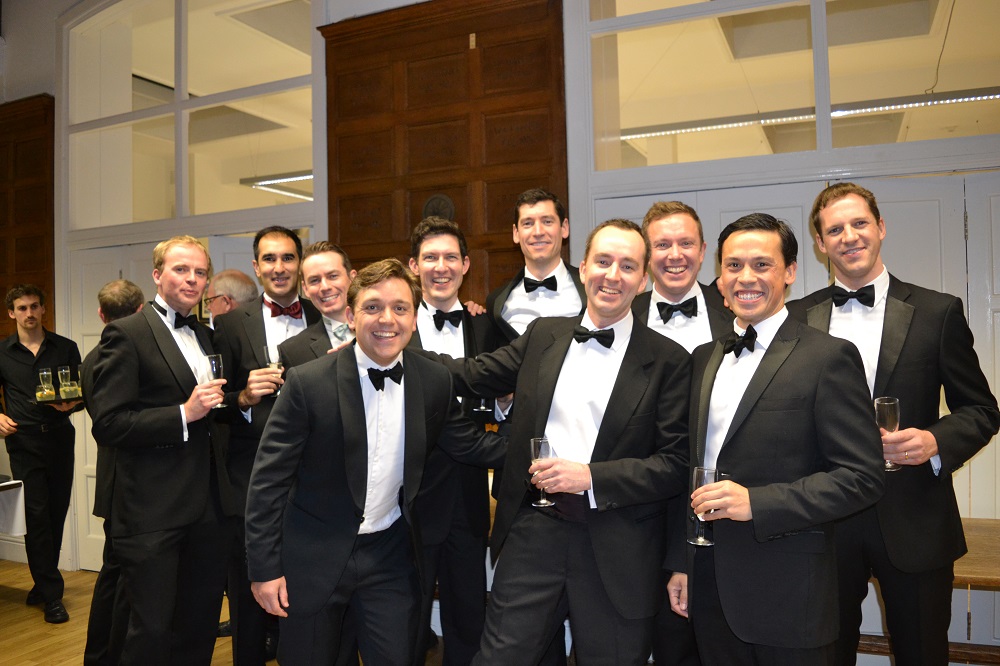
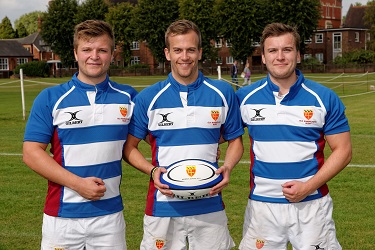
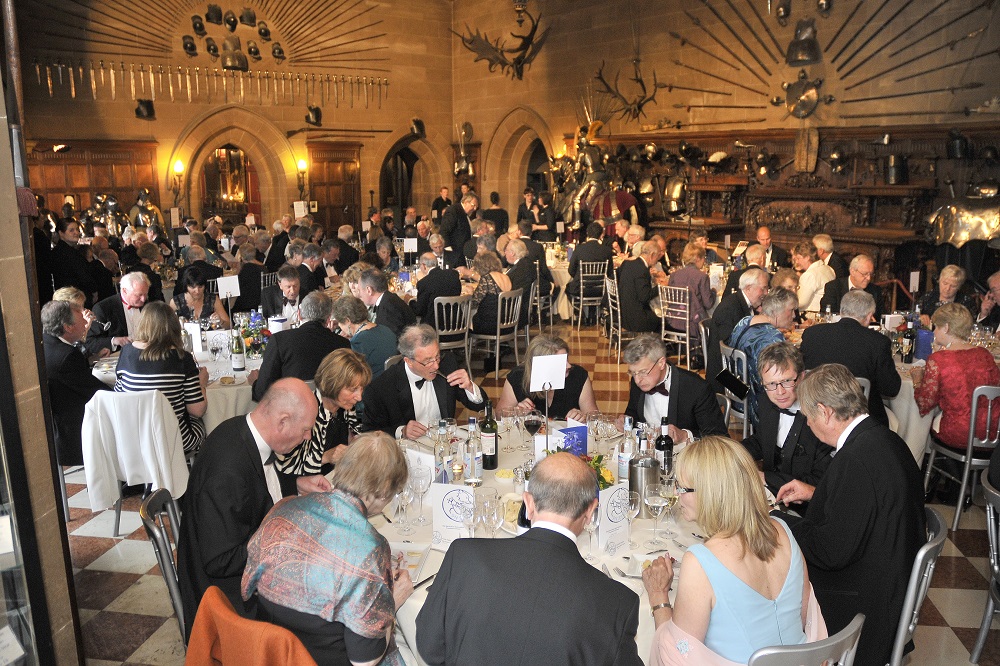
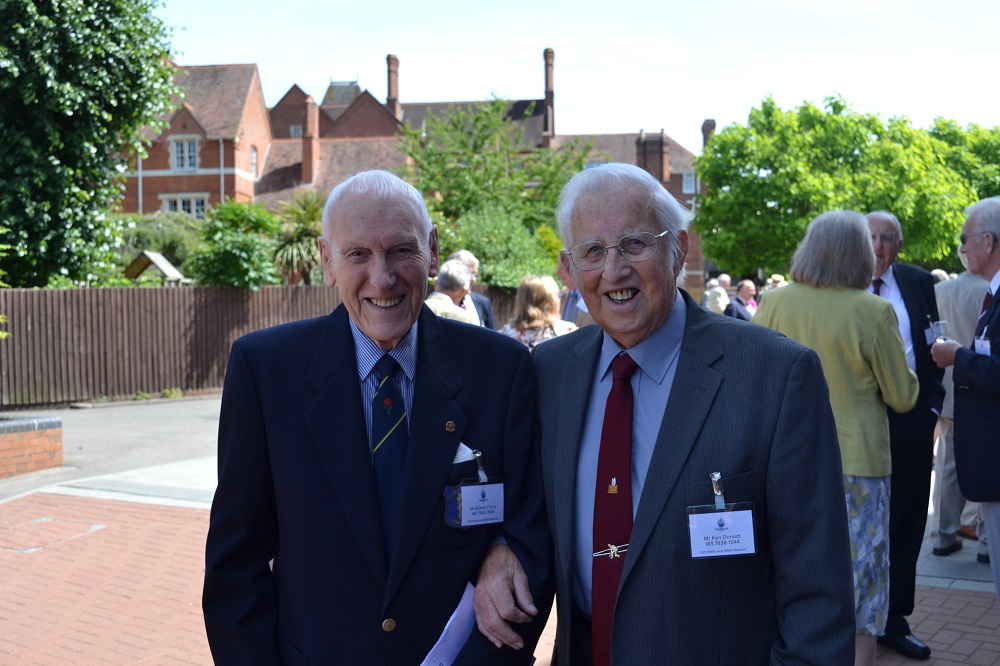
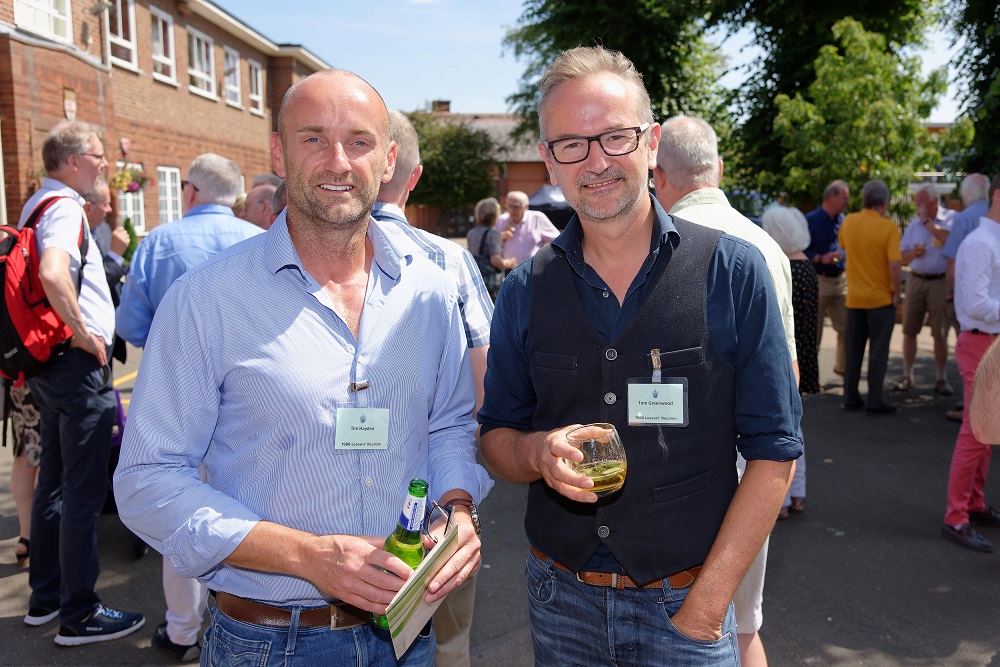
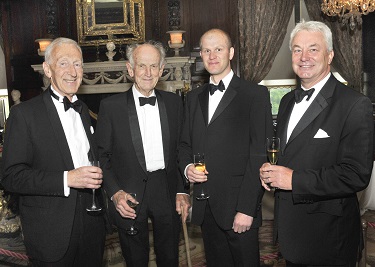
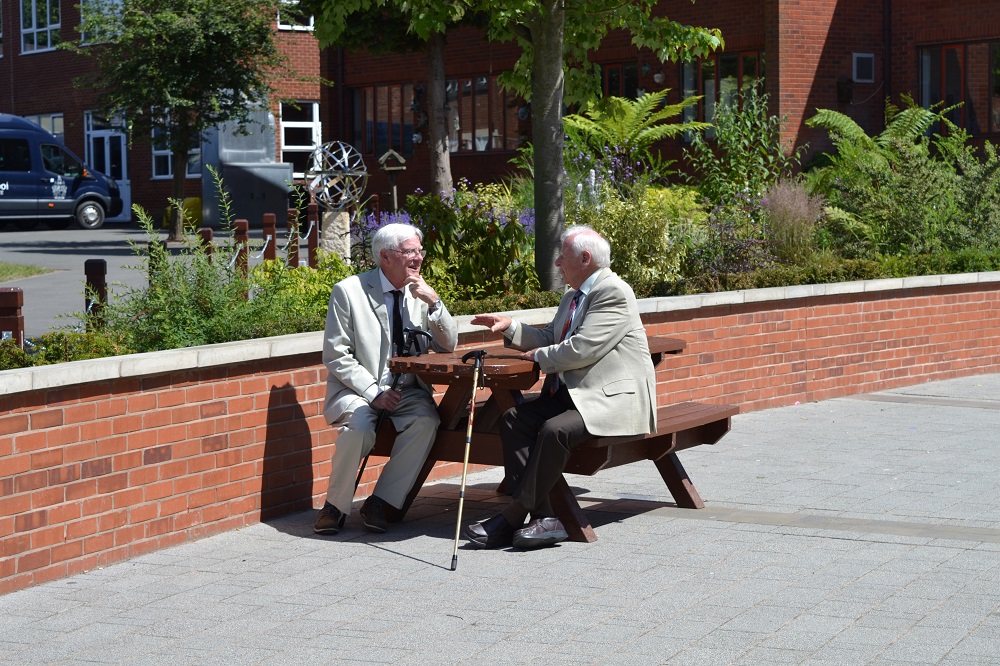
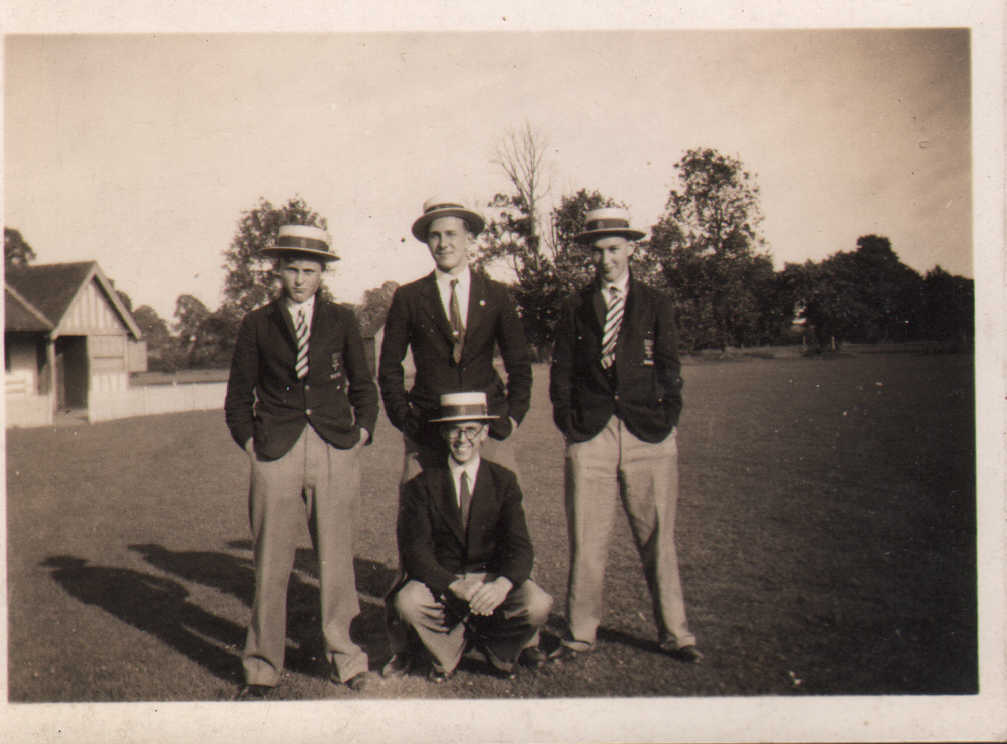
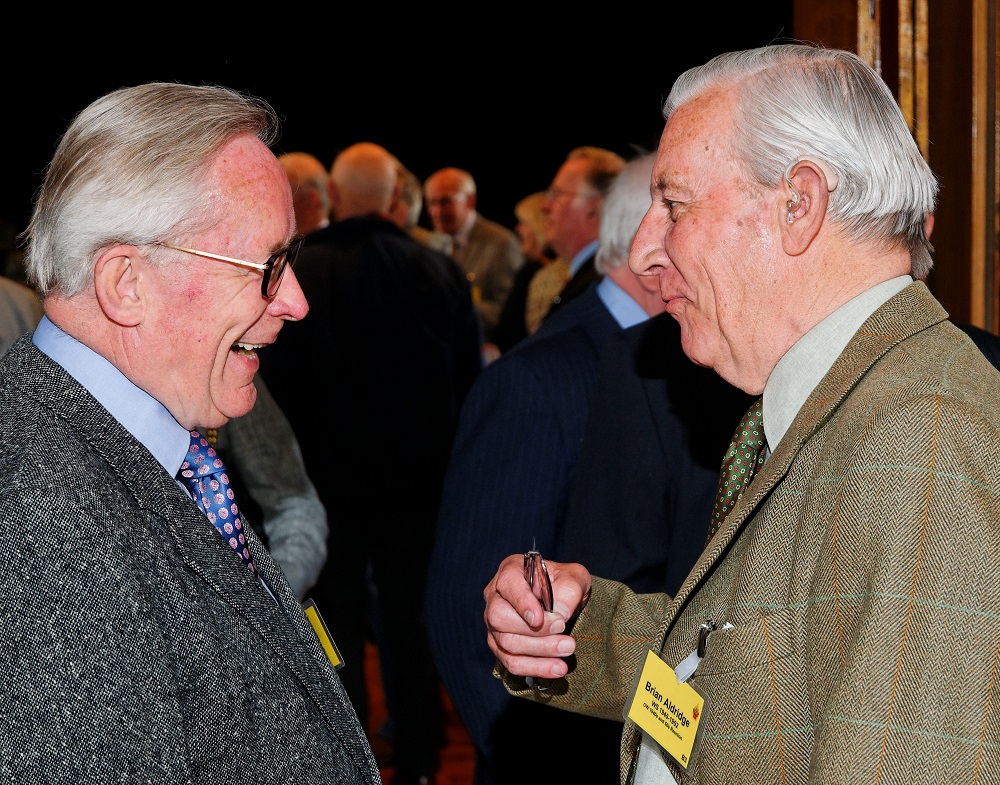
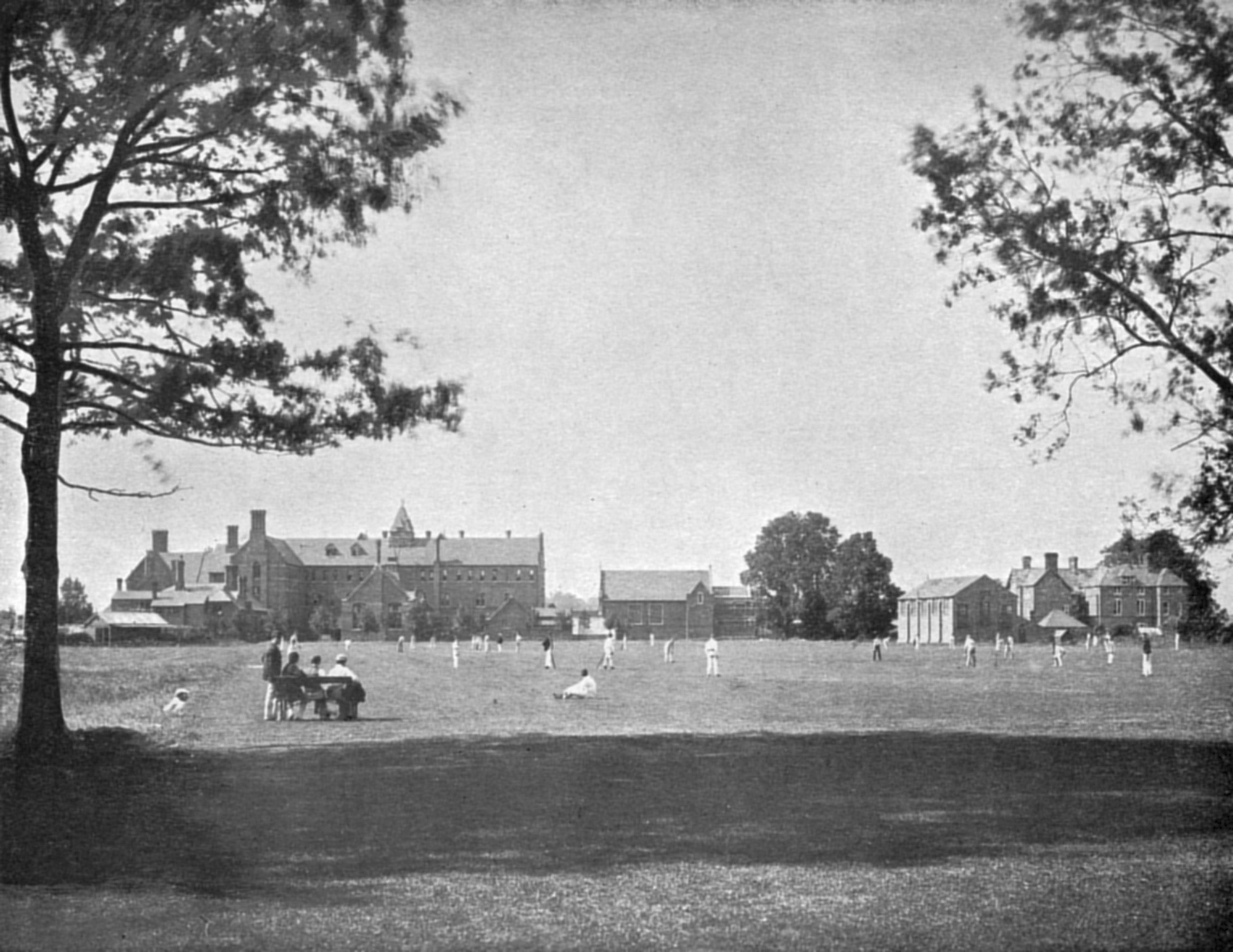
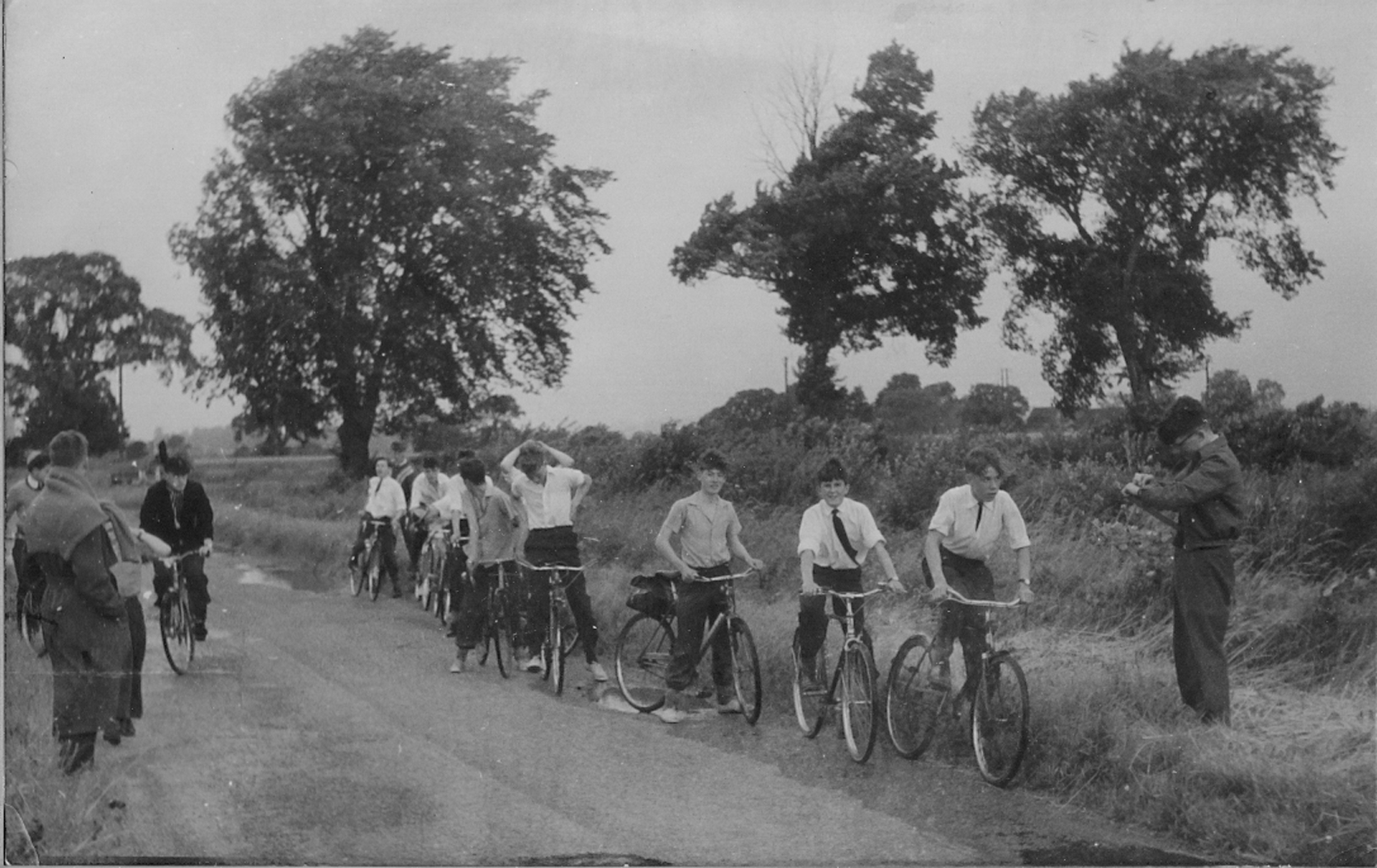
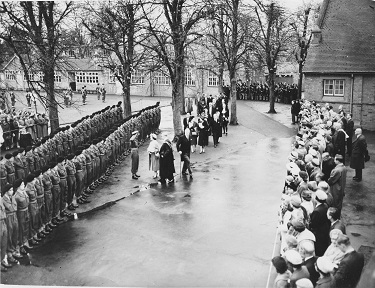
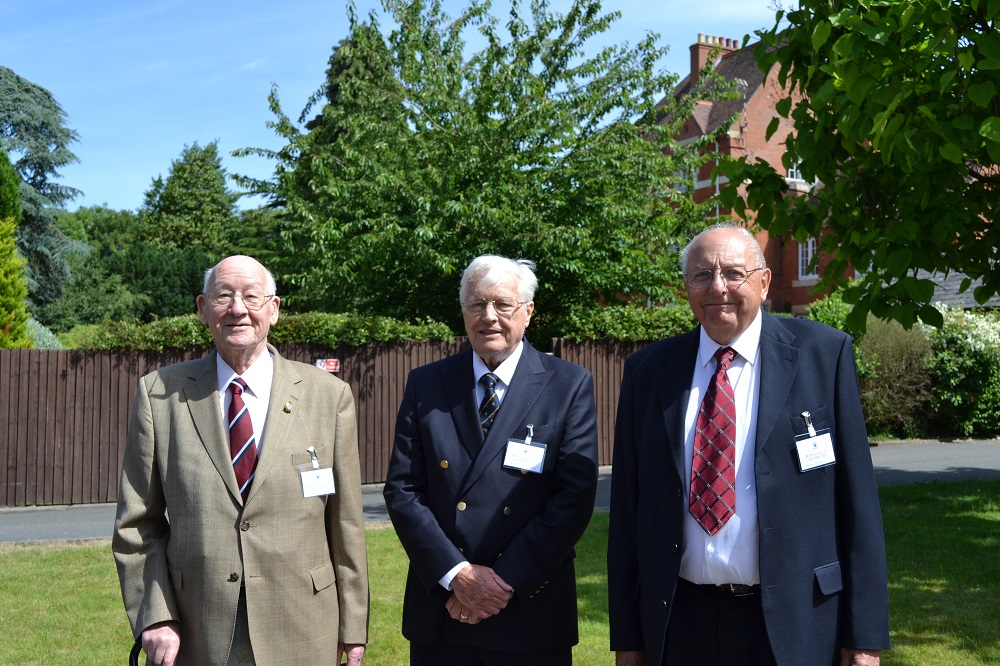
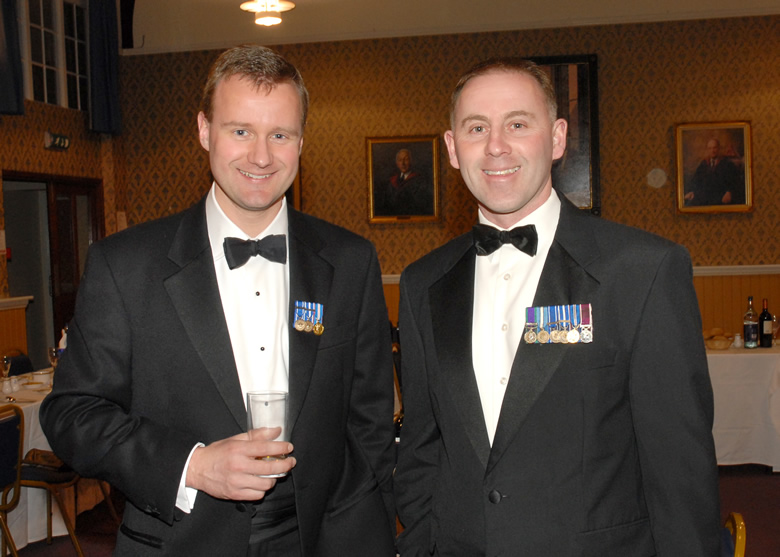
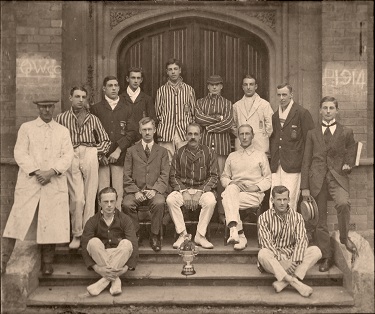

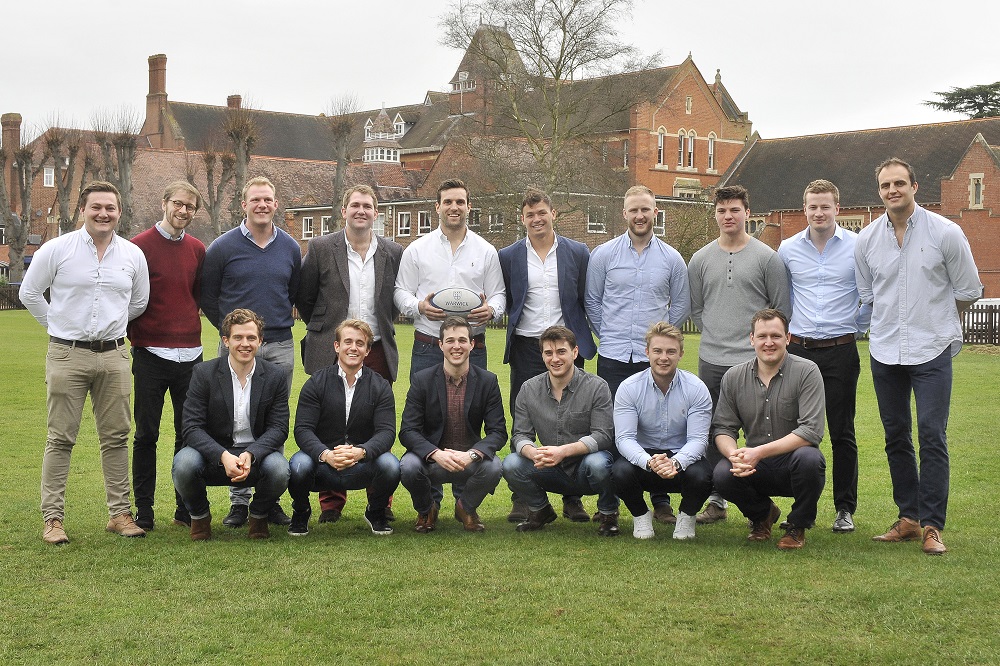
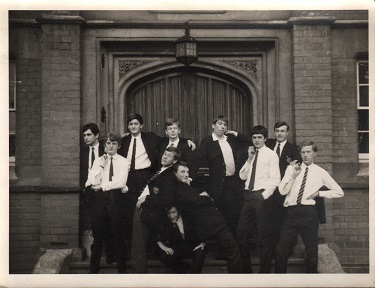
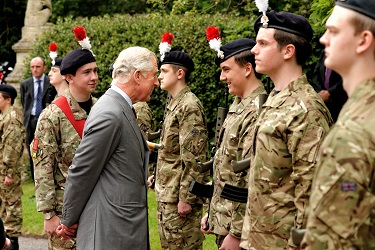
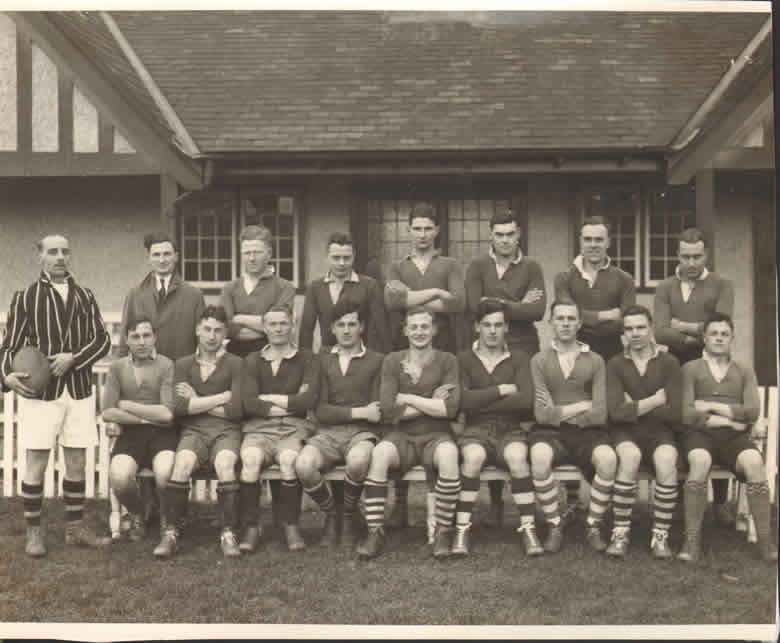
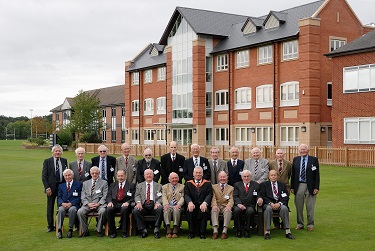
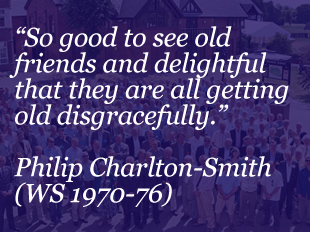
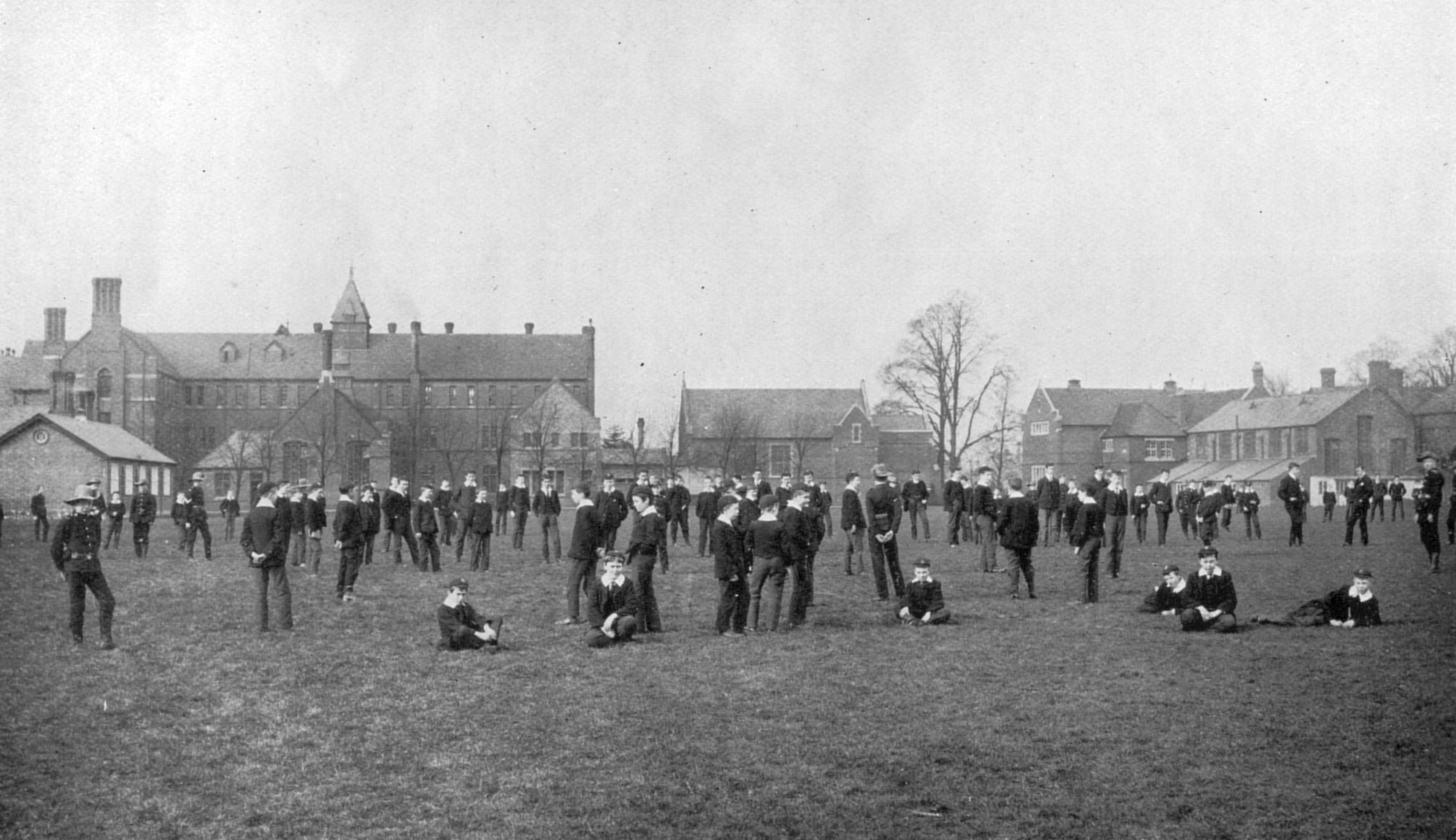

.jpg)
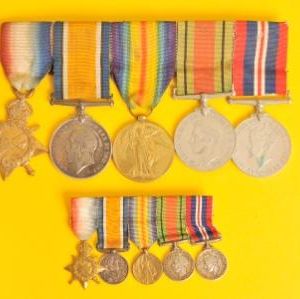
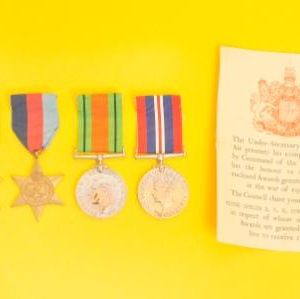
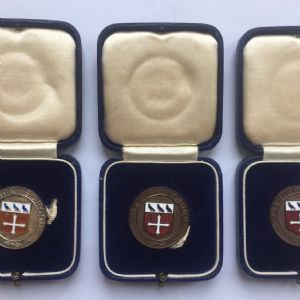
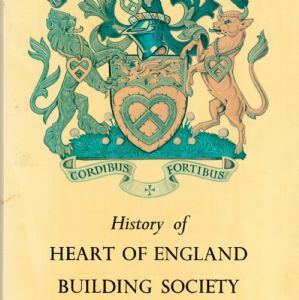
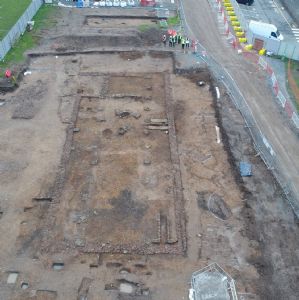
.jpg)
.jpg)
.jpg)
.jpg)
.jpg)
.jpg)
.jpg)
.jpg)
.jpg)
.jpg)
.jpg)
.JPG)
.jpg)
.jpg)
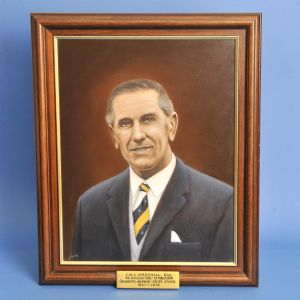
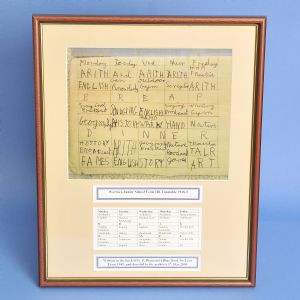
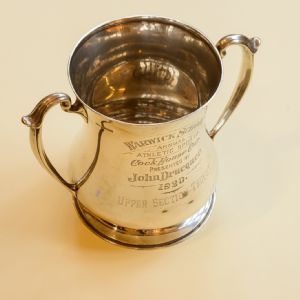
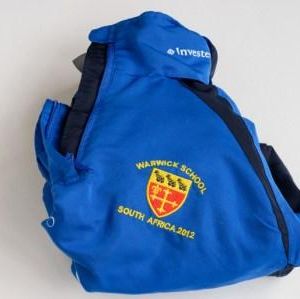
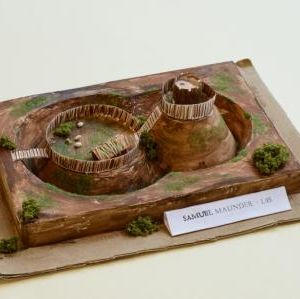
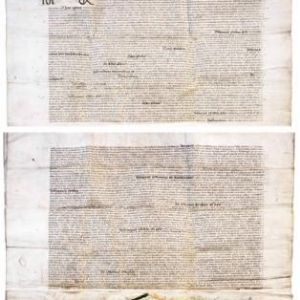
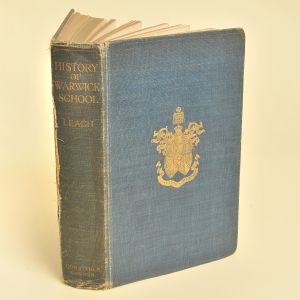
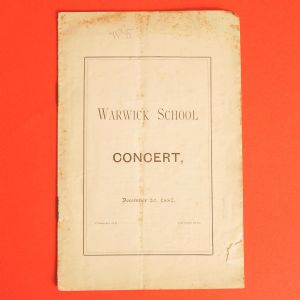
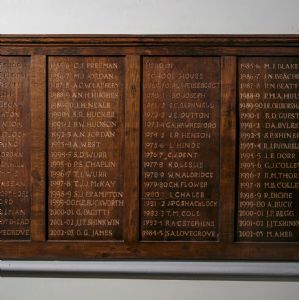
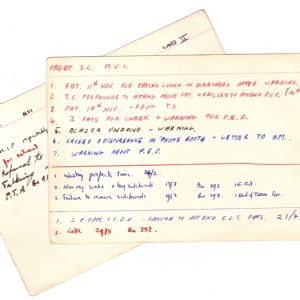
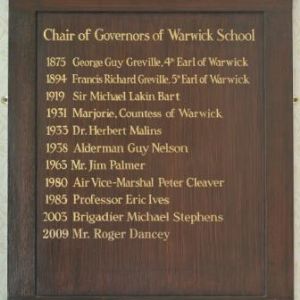
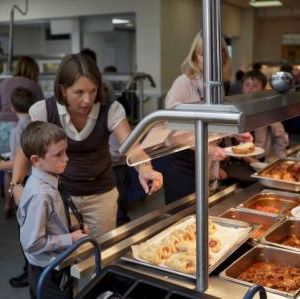
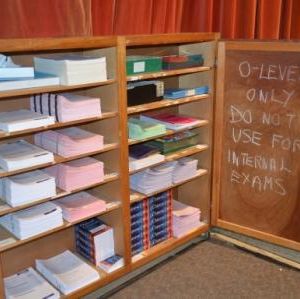
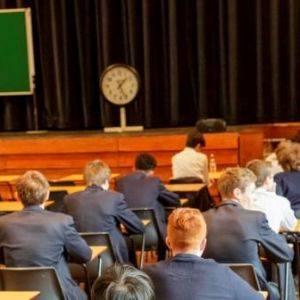
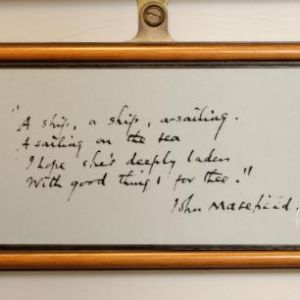
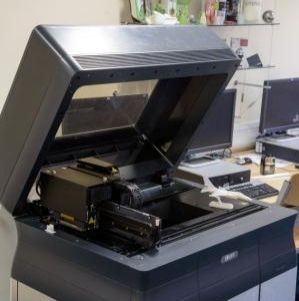
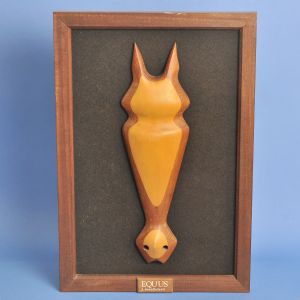
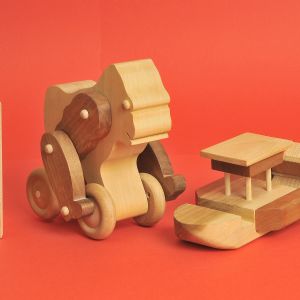
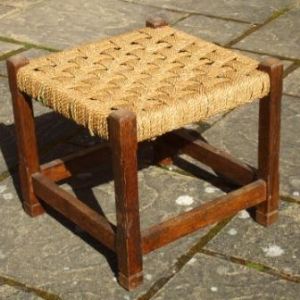
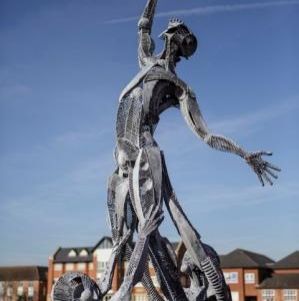
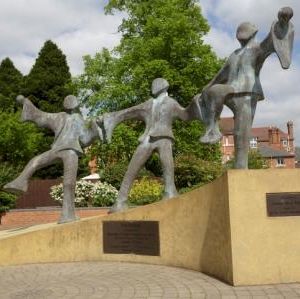
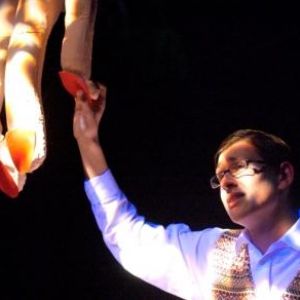
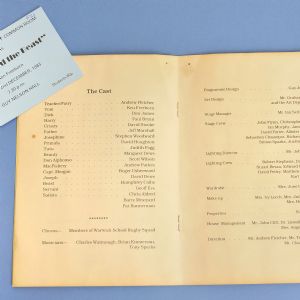
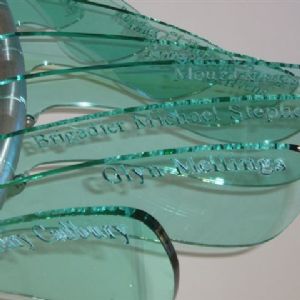
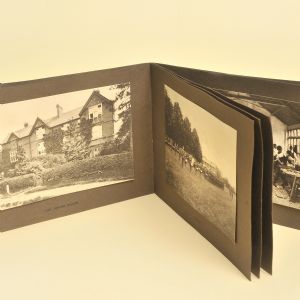
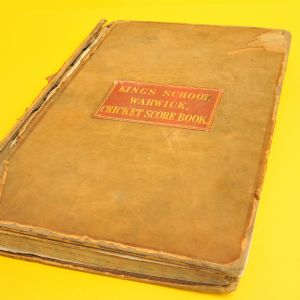
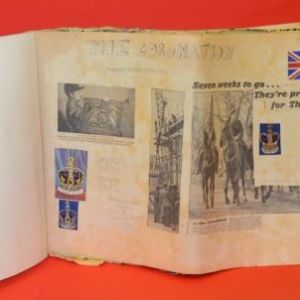
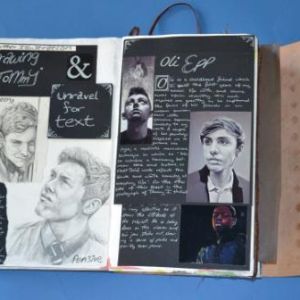
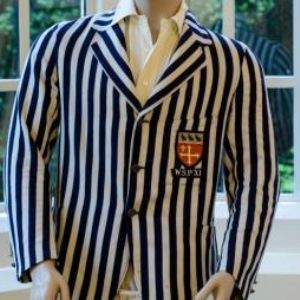
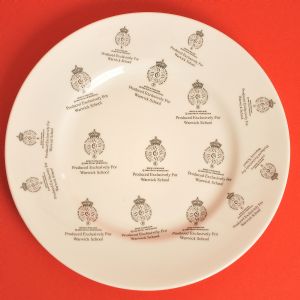
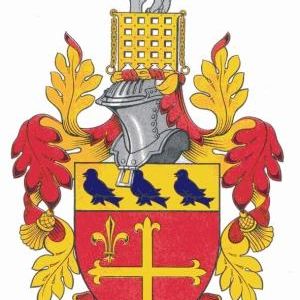
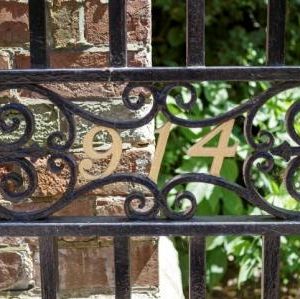
.jpg)
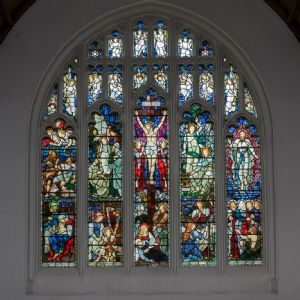
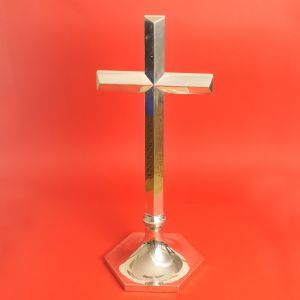
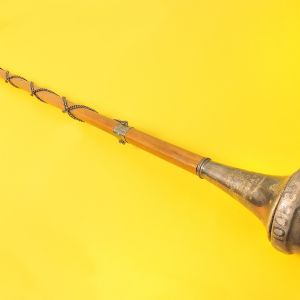
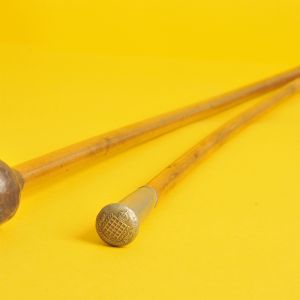
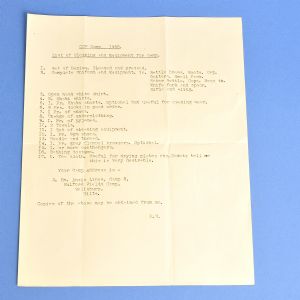
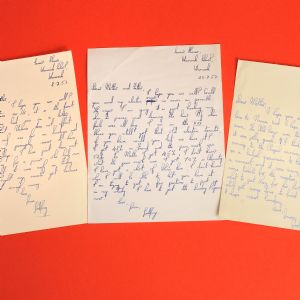
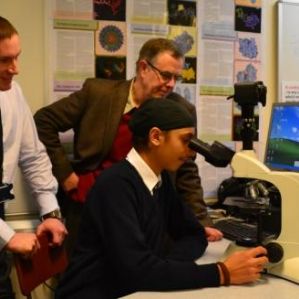
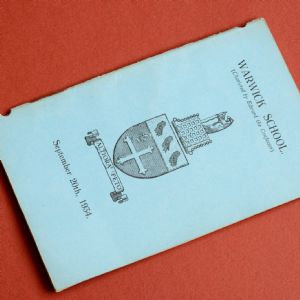
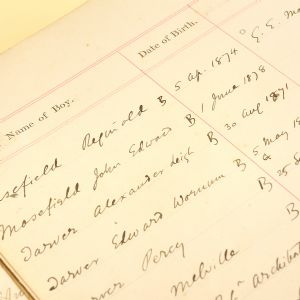
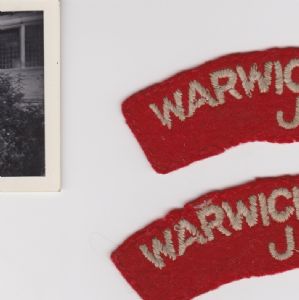
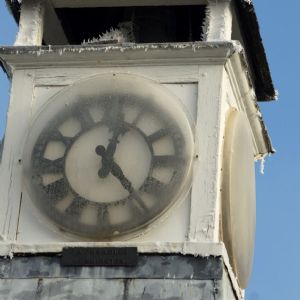
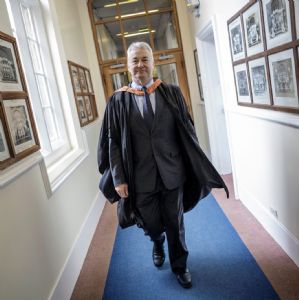
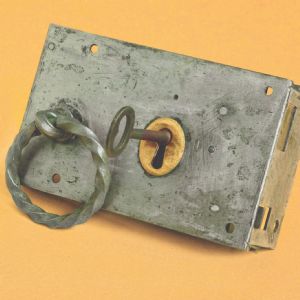
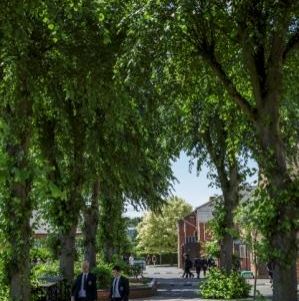
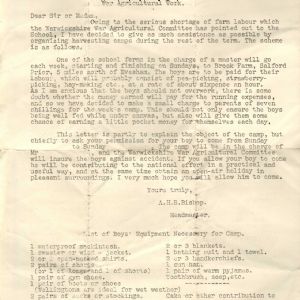
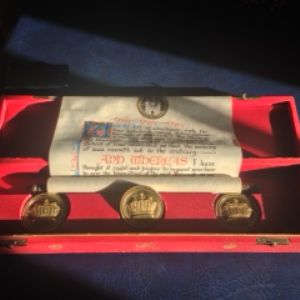
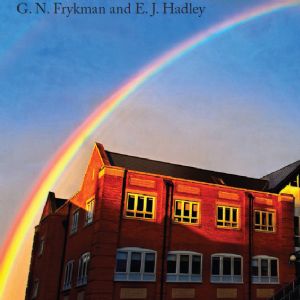
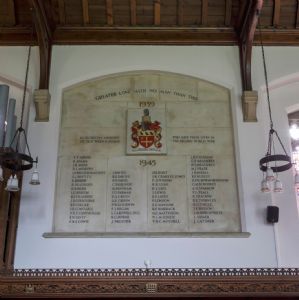
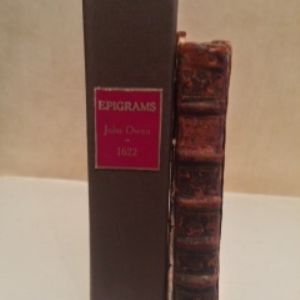
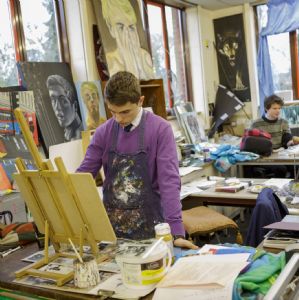
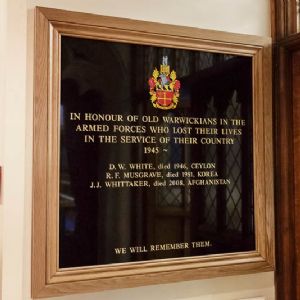
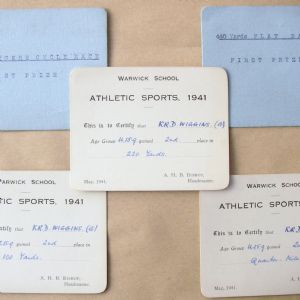
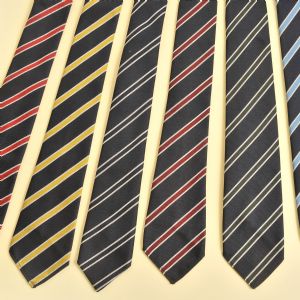
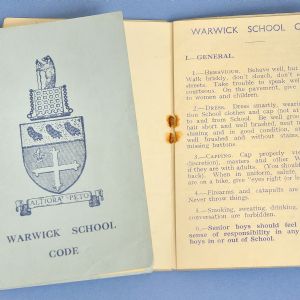
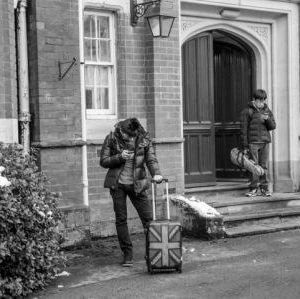
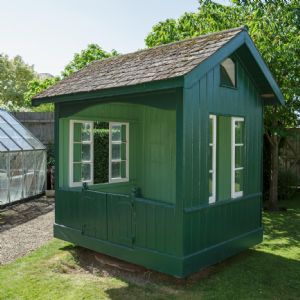
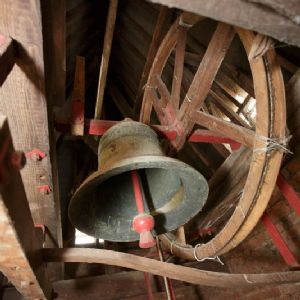
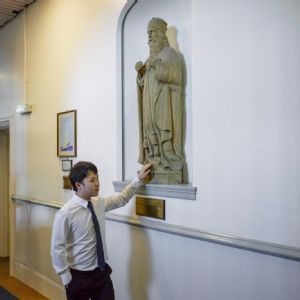
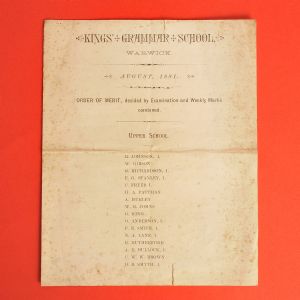
.jpg)
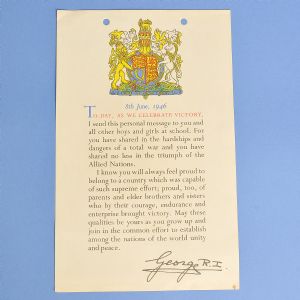
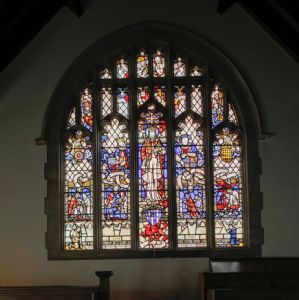
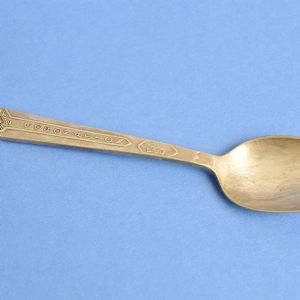
.jpg)
.jpg)
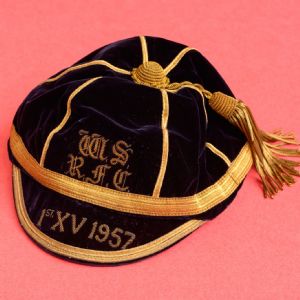
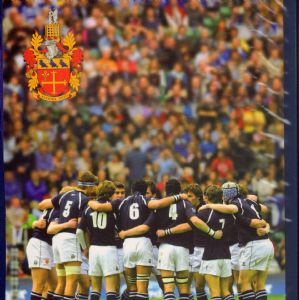
.jpg)
.jpg)
.jpg)
.jpg)
.JPG)
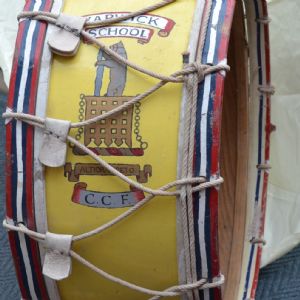
.jpg)
.JPG)
.jpg)
.jpg)
.jpg)
.jpg)
.jpg)
.jpg)
.jpg)
.jpg)
.jpg)
.jpg)
